| |||||||
| Search Forums |
| Advanced Search |
| Go to Page... |
 |
| Search this Thread |  693,754 views |
| | #1381 | |
| Senior - BHPian | Re: Scale Models - Aircraft, Battle Tanks & Ships Quote:
 . Extremely well done and thank you for sharing these pictures. Always a pleasure to see your work. The depiction of mud, rust, paint chips etc on that tiny jeep is just . Extremely well done and thank you for sharing these pictures. Always a pleasure to see your work. The depiction of mud, rust, paint chips etc on that tiny jeep is just  !!! !!! | |
| |  ()
Thanks ()
Thanks
 |
| |
| | #1382 | ||
| BHPian Join Date: Jan 2014 Location: Kolkata
Posts: 446
Thanked: 424 Times
| Re: Scale Models - Aircraft, Battle Tanks & Ships Quote:
And thank you so much for the kind words 🤘🤘 Quote:
Thank you so much ☺️, that is a style of modelling we modellers refer to as “weathered”. There’s an entire market of guide, technique, paints and equipment’s just to cater to armor and vehicle weathering. | ||
| |  (2)
Thanks (2)
Thanks
 |
| The following 2 BHPians Thank basuroy for this useful post: | Jeroen, V.Narayan |
| | #1383 |
| Distinguished - BHPian  Join Date: Aug 2014 Location: Delhi-NCR
Posts: 4,071
Thanked: 64,335 Times
| Re: Scale Models - Aircraft, Battle Tanks & Ships
With solar and electric powered aircraft bi-planes will make a comeback especially for smaller slower electric aircraft. As most may know the reason they had bi-planes in the early days of flight was the need to generate enough lift was not feasible with just one pair of aerofoils given the design knowledge of the time. Now wings are far more advanced and for small commuter electric planes (where speed is less important) I wouldn't be surprised to see high tech aerofoils in a bi-plane configuration to reduce the power needed. |
| |  (1)
Thanks (1)
Thanks
 |
| The following BHPian Thanks V.Narayan for this useful post: | basuroy |
| | #1384 | |
| BHPian Join Date: May 2009 Location: NYC / Lucknow
Posts: 620
Thanked: 3,549 Times
| Re: Scale Models - Aircraft, Battle Tanks & Ships Quote:
 Looks more real than the real thing! Looks more real than the real thing!What kind of tape do you use for masking before painting? I use normal scotch (transparent) tape and many times when I use a brush for painting the paint runs underneath the tape. Or maybe because you use only spray painting you don't have this problem. | |
| |  (1)
Thanks (1)
Thanks
 |
| The following BHPian Thanks Foxbat for this useful post: | basuroy |
| | #1385 | |
| BHPian Join Date: Jan 2014 Location: Kolkata
Posts: 446
Thanked: 424 Times
| Re: Scale Models - Aircraft, Battle Tanks & Ships Quote:
 For majority of the task, I use Tamiya masking tape. It is not locally available though recently, I am told by a fellow modeller than a tape known as "Rice paper tape" is very similar as Tamiya. I tried to search for it just now on Amazon but could not find it. You can also try "masking tape" ( search by that phrase at flipkart or amazon for a variety of results). Make sure that you de-tack most of the glue first by pressing and removing th tape repeatedly on your skin. The strong glue can lift the paint otherwise.... | |
| |  (1)
Thanks (1)
Thanks
 |
| The following BHPian Thanks basuroy for this useful post: | Foxbat |
| | #1386 |
| Senior - BHPian | Re: Scale Models - Aircraft, Battle Tanks & Ships 1:72 Mitsubishi F-15J Eagle JASDF 201st Tactical Fighter Sqdn "Fighting Bears", #32-8943, JASDF 60th Anniversary, 2014 (JC Wings) The Mitsubishi F-15J/DJ Eagle is a twin-engine, all-weather air superiority fighter based on the McDonnell Douglas F-15 Eagle in use by the Japan Air Self-Defense Force (JASDF). The F-15J was produced under license by Mitsubishi Heavy Industries. Japan is the largest customer of the F-15 Eagle outside the United States. The F-15J Kai is a modernized version of the F-15J. After congressional review, the US Department of Defense (DoD) withheld the aircraft's electronic warfare and engine systems from the licensing. Initially, the aircraft were produced in the U.S. and exported to Japan. F-15J/DJs are identical to F-15C/Ds aprt from the ECM, RWR, and nuclear equipment. The AN/ALQ-135 Internal Countermeasures System from the F-15C was replaced by the indigenous J/ALQ-8 and the AN/ALR-56 Radar Warning Receiver was replaced by the J/APR-4. The engine is the Pratt & Whitney F100 turbofan, produced under license by IHI Corporation. The F-15J is characterized by an indigenous data link, but they do not support Link 16 FDL mounted by USAF F-15Cs. It works as a basic bidirectional link with the Japanese ground-controlled intercept network, and it is limited because it is not a true network. Mitsubishi received the F-15C/D Multistage Improvement Program (MSIP) and in 1987 began upgrading the F-15J/DJs. Improvements included an uprated central computer, engines, armament control set and added the J/APQ-1 countermeasures set. The F100-PW-220 (IHI-220) was upgraded to the F100-PW-220E (IHI-220E) with a digital engine electronic control retrofit. Differences in appearance from earlier F-15Js include the J/ALQ-8 ICS with an ICS antenna mounted under the intake. The J/APQ-4 RWR antenna position on the F-15J/DJs is the same as F-15C/Ds, but the lens of F-15J/DJ MSIPs are black rather than white for F-15C/Ds. F-15Js have been equipped with the Japanese-built AAM-3 missile, an improved AIM-9 Sidewinder follow-on with distinctive "barbed" forward fins. Japan has been investigating an advanced fighter to replace the F-15, meanwhile the F-15J fleet is being modernized On 28 July 2003, the first upgraded F-15J (#928) made its first flight, and it was delivered to the JASDF Air Development Test Wing on 21 October 2003. F-15J/DJ Kai In December 2004, the Japanese Government approved a Mid-Term Defense Program (MTDP) to modernize the F-15J MSIPs over five years in accordance with new National Defense Program Guidelines. The upgrade is being implemented in phases, but ultimately the upgrade included a new ejection seat; replaced IHI-220E engines; uprated electrical generation and cooling capabilities to support more avionics and the Raytheon AN/APG-63(V)1 radar. The radar will ultimately be installed in 80 F-15Js and supports the AAM-4 missile, the Japanese answer to the AIM-120 AMRAAM 201st TFS "Fighting Bears" JASDF 2nd Air Wing, Chitose Air Base The 201st Tactical Fighter Squadron is F-15J/DJ squadron of the JASDF's 2nd Air Wing based at Chitose Air Base, in Hokkaido Prefecture, Japan. The Squadron derives its name from a brown bear. Brown bears are common in Japan's Hokkaido Prefecture. The Model The model is the same that Narayan Sir had posted earlier in the thread, but with a different livery. JASDF is known for painting its fighters in some spectacular liveries. F-15J 32-8943 of the 201st TFS was painted in this livery to mark the 60th anniversary of the JASDF. It joins its Japanese compatriots - 1:80 F-4EJ, 1:72 F-2B & A6M, 1:100 RF-4E and 1:250 US-2 in my collection. The model comes with 3 X F-15 drop tanks, 4 X AIM-7 Sparrow SARH missiles and 4 X AAM-3 IR missiles. As with most JC models, attaching the weapons, landing gears was a real pain  . Had to Use Tackit to attach the nose gear as just would not stay in its groove. One of the tail fins came off which was glued back using Fevikwik. The rudders and elevators move and the canopy & dorsal airbrake can be opened & closed. No stand, which is a big disappointment with JC 1:72 military models. . Had to Use Tackit to attach the nose gear as just would not stay in its groove. One of the tail fins came off which was glued back using Fevikwik. The rudders and elevators move and the canopy & dorsal airbrake can be opened & closed. No stand, which is a big disappointment with JC 1:72 military models.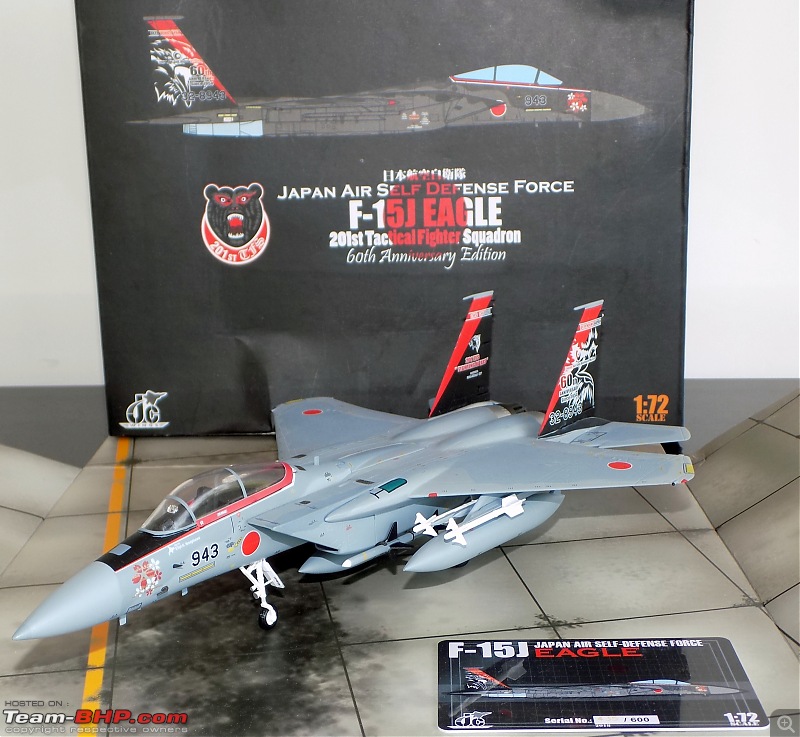 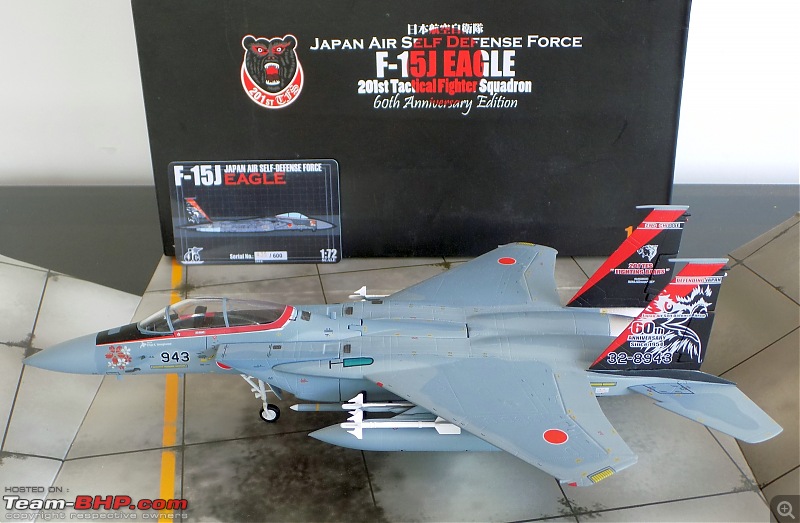 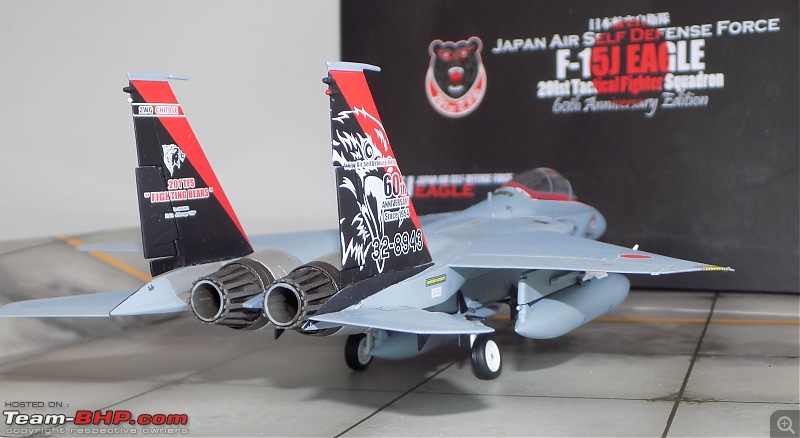 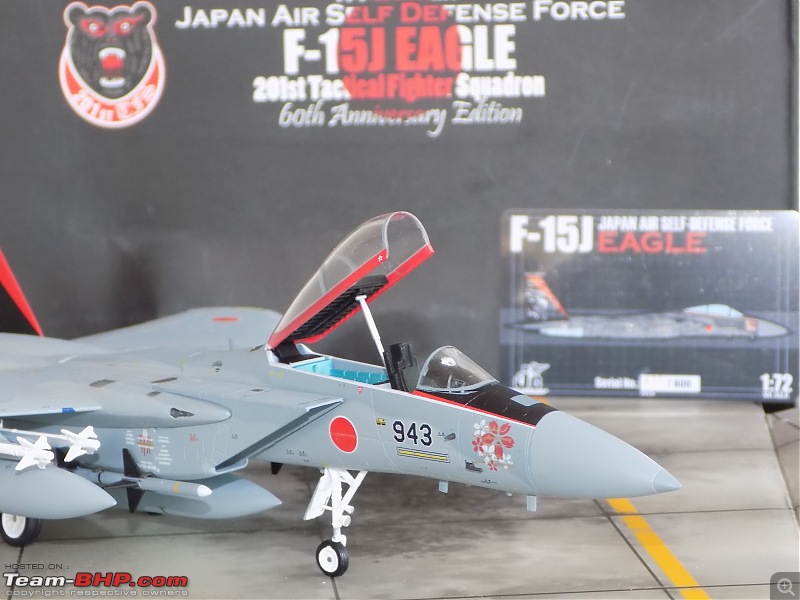 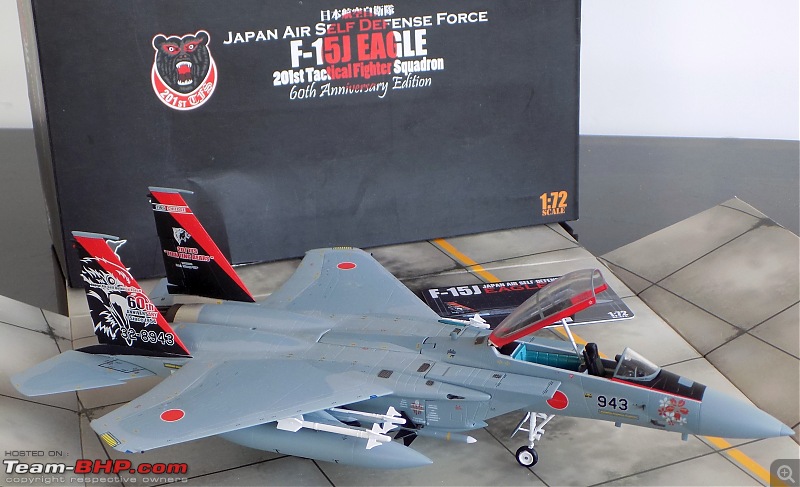 Proud owner of the 435th of the 600 models produced by JC wings. 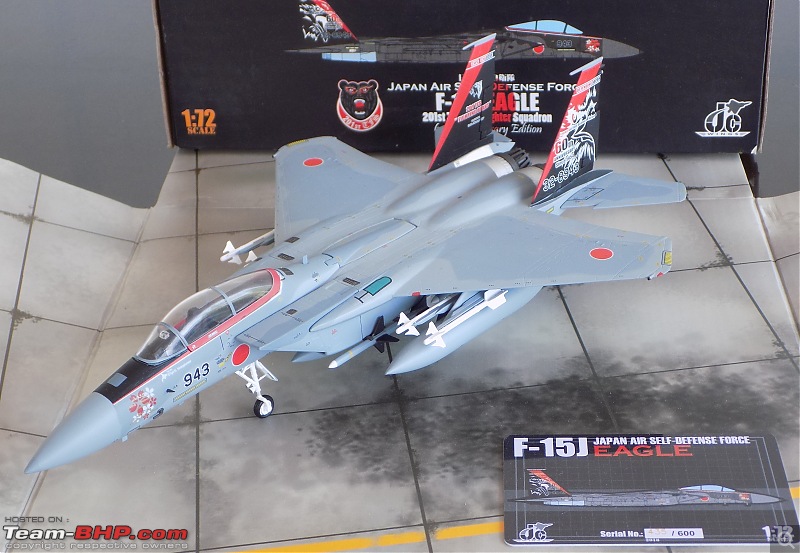 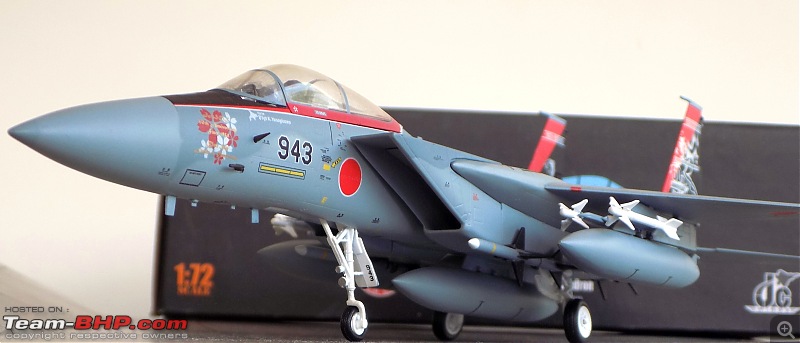 AAM-3s on the wing pylons 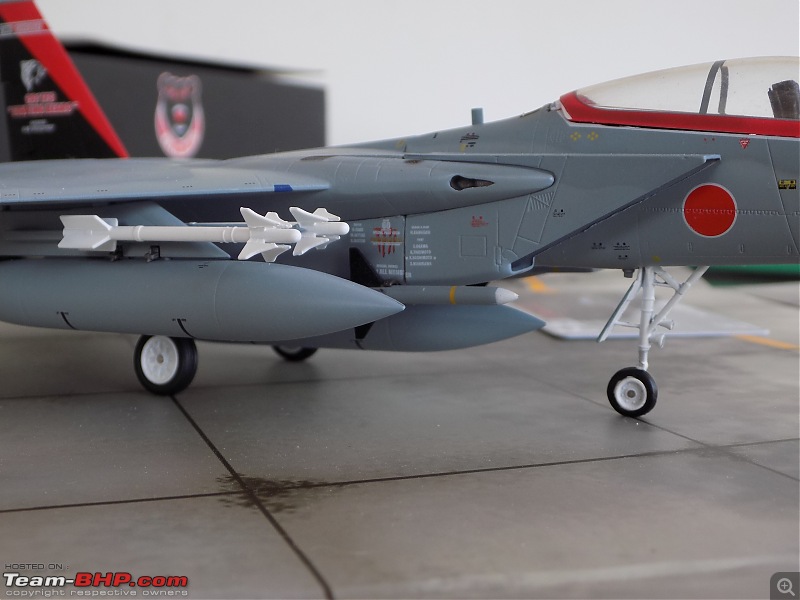 Engine Fan blades are modelled!!!! 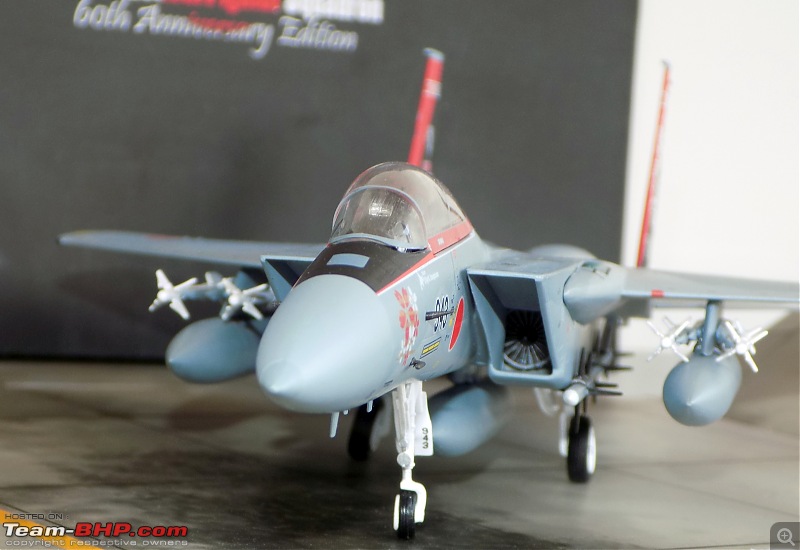 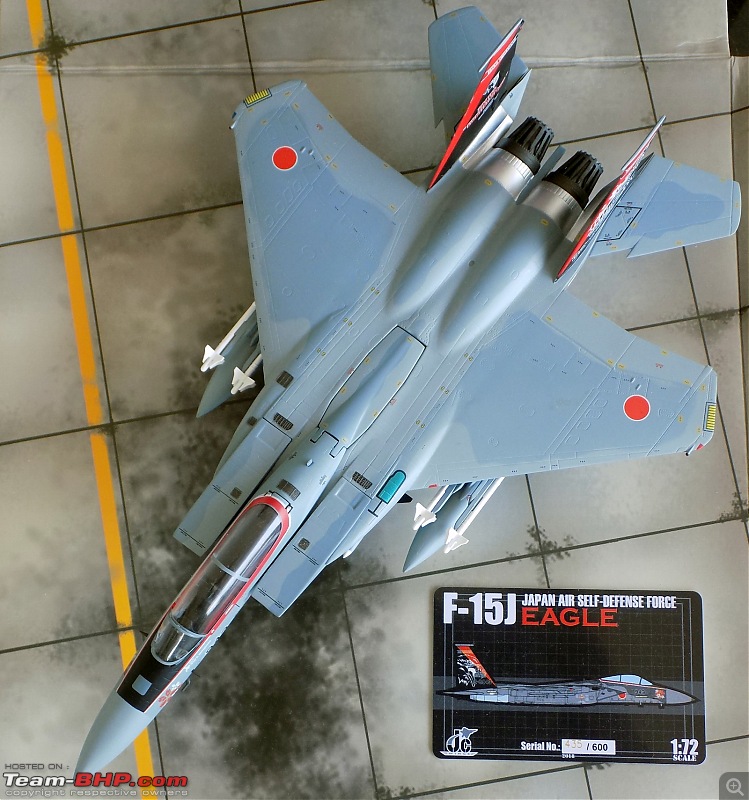 Close up of the fine art work/crew names on the model. Not the cannon port on the wing root which houses the M61A1 Vulcan Gatling gun 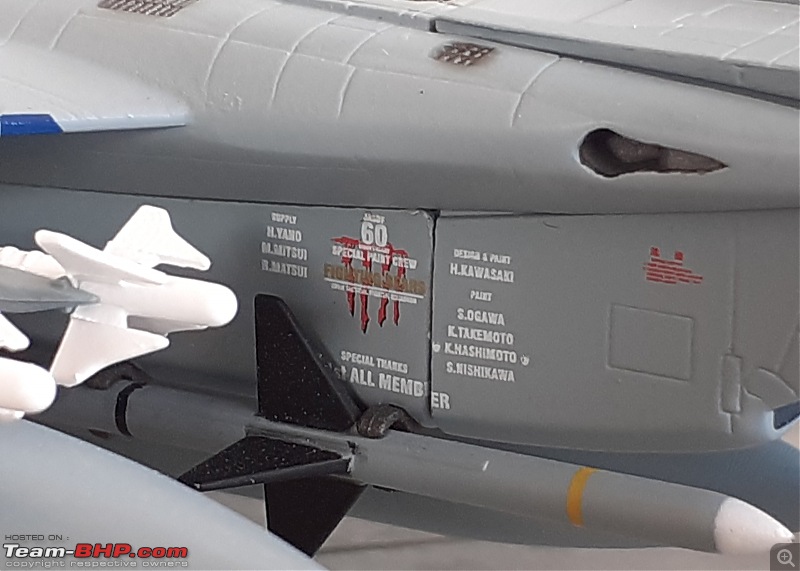 The 201st TFS CO's name on the inner side of the tail fins - Lt Col J Hamaya "Sub" 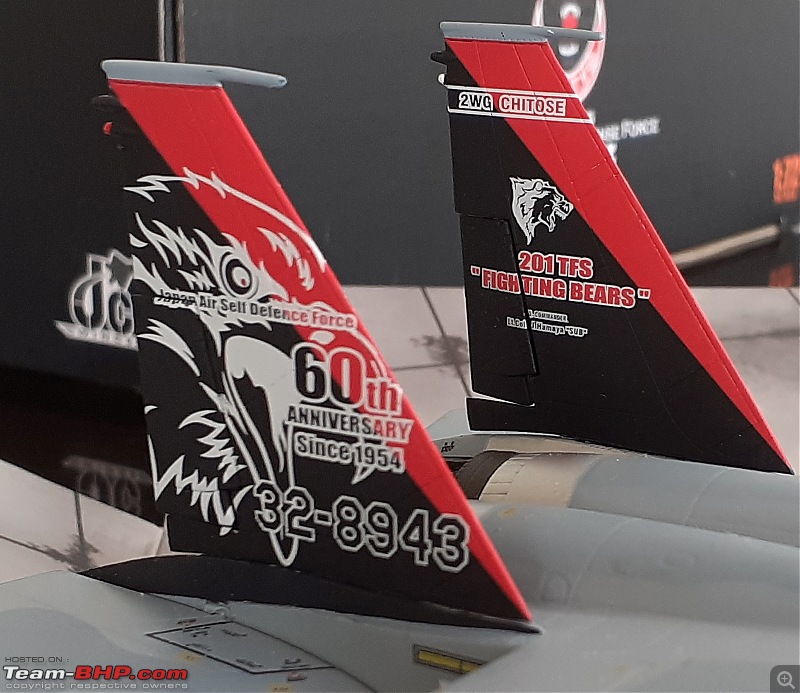 The Aircraft crew chief's name - Tech Sgt K Yanagisawa 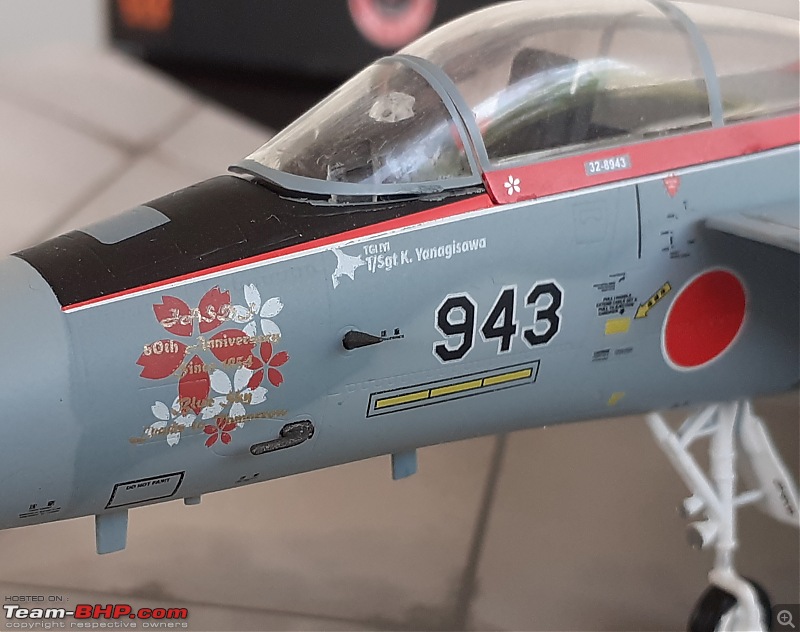 The real F-15J 32-8943 in the 201st TFS 60th Anniversary markings 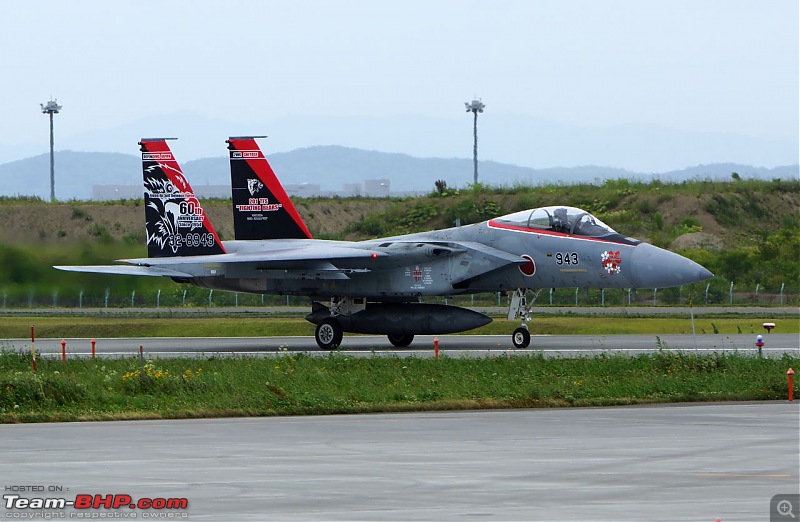 Main differences between the F15C & F-15J, most of which have been modelled on this JC model) 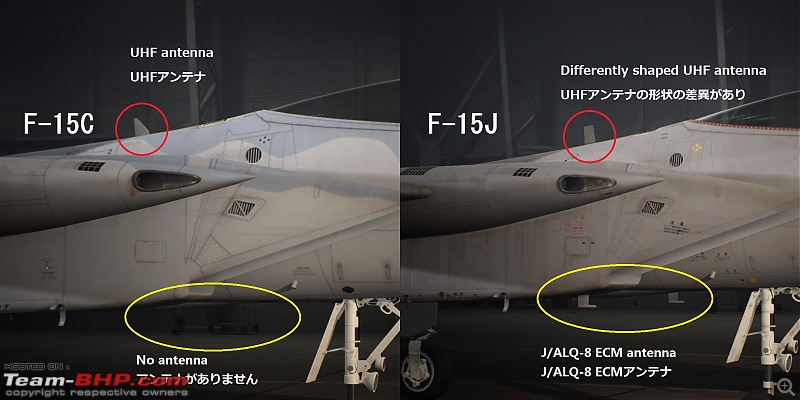 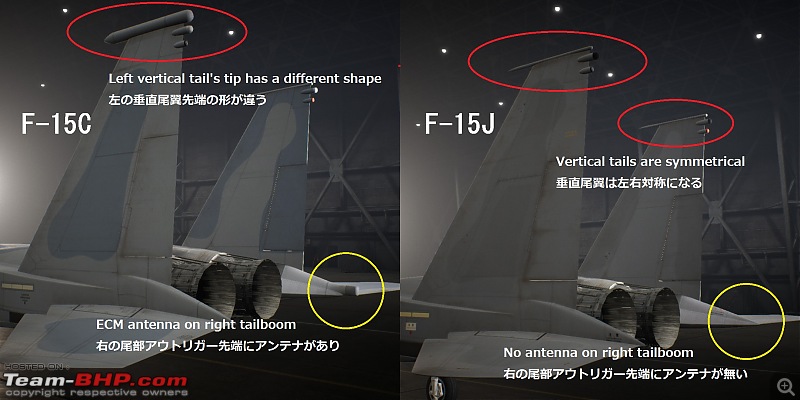 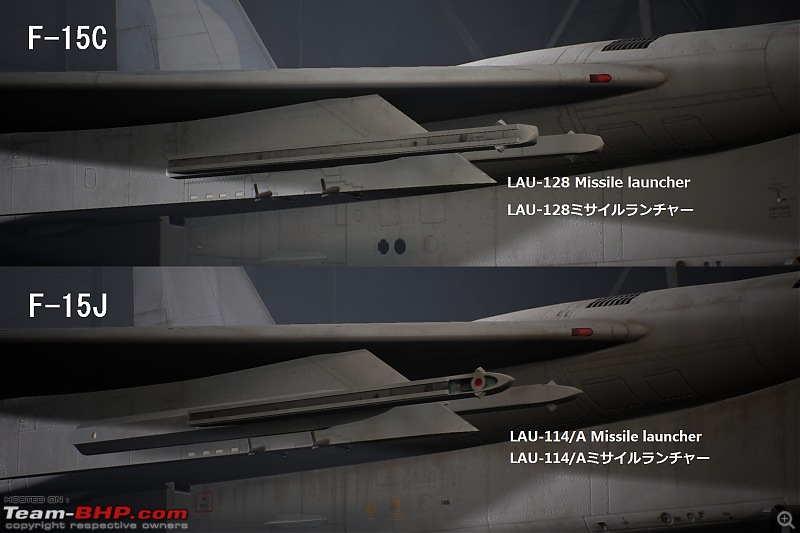 The A2A missile options on the F-15J 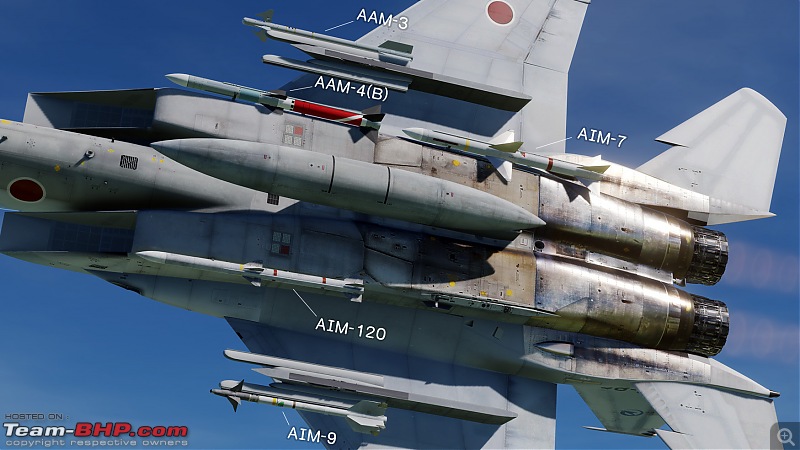 Single AAM-5 IRM on the starboard wing pylon 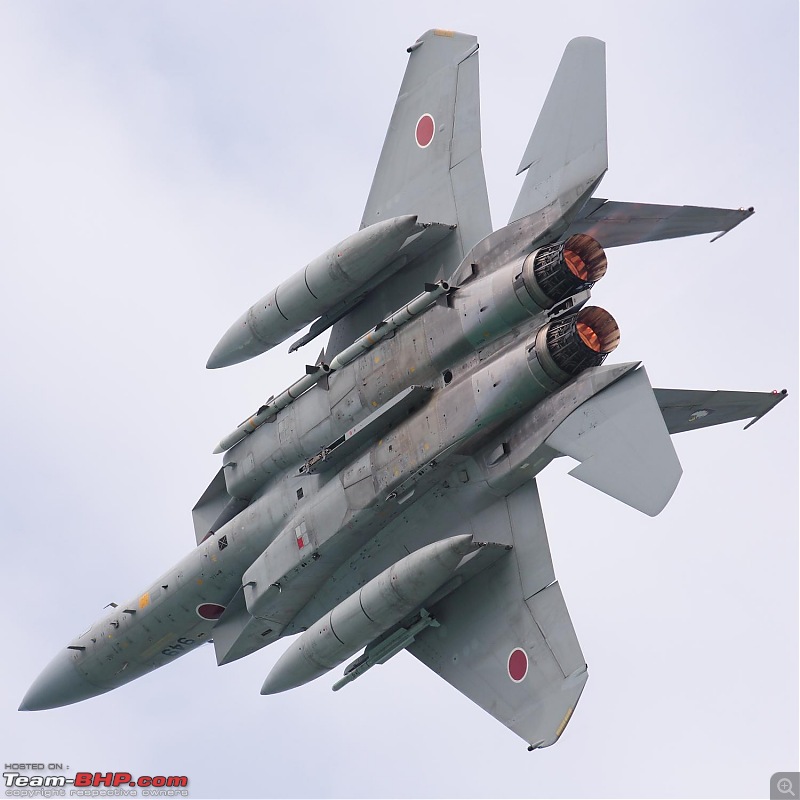 Last edited by skanchan95 : 24th December 2020 at 11:49. |
| |  (4)
Thanks (4)
Thanks
 |
| The following 4 BHPians Thank skanchan95 for this useful post: | basuroy, Foxbat, FrozeninTime, V.Narayan |
| | #1387 | |
| BHPian Join Date: May 2009 Location: NYC / Lucknow
Posts: 620
Thanked: 3,549 Times
| Re: Scale Models - Aircraft, Battle Tanks & Ships Quote:
Is this from DBJets or from a seller in China / HK? | |
| |  (1)
Thanks (1)
Thanks
 |
| The following BHPian Thanks Foxbat for this useful post: | skanchan95 |
| | #1388 | |
| Senior - BHPian | Re: Scale Models - Aircraft, Battle Tanks & Ships Quote:
 . In fact the AAM-3 on this F-15J looks much more detailed than the AAM-3 on my HM F-2B. . In fact the AAM-3 on this F-15J looks much more detailed than the AAM-3 on my HM F-2B.There is a glaring mistake on this JC F-15J model(or for that matter any JC single seat F-15 model) - The canopy looks more like that of twin seat F-15B/D eagle than a Single seat F-15A/C/J. While I knew about it, the livery was just too good to let go. DBJets, on pre-order. | |
| |  ()
Thanks ()
Thanks
 |
| | #1389 |
| BHPian Join Date: May 2009 Location: NYC / Lucknow
Posts: 620
Thanked: 3,549 Times
| Re: Scale Models - Aircraft, Battle Tanks & Ships
Yes I noticed this also, looks like the 2nd seat was missing and I Googled some pictures to see the how the actual aircraft looks. I see the front canopy has come off a bit, carefully apply some super glue at the bottom of the canopy after taking it off completely. You have to be very careful because if the glue comes on the clear canopy parts it's can't be removed. |
| |  (1)
Thanks (1)
Thanks
 |
| The following BHPian Thanks Foxbat for this useful post: | skanchan95 |
| | #1390 | |
| Distinguished - BHPian  Join Date: Aug 2014 Location: Delhi-NCR
Posts: 4,071
Thanked: 64,335 Times
| Re: Scale Models - Aircraft, Battle Tanks & Ships Quote:
 A truly top class model with some fantastic detailing. Hearty congratulations. The JASDF has made a good habit of taking US fighters and improving on them for home use. A great addition to your collection. A truly top class model with some fantastic detailing. Hearty congratulations. The JASDF has made a good habit of taking US fighters and improving on them for home use. A great addition to your collection. | |
| |  (1)
Thanks (1)
Thanks
 |
| The following BHPian Thanks V.Narayan for this useful post: | skanchan95 |
| | #1391 |
| BHPian Join Date: May 2009 Location: NYC / Lucknow
Posts: 620
Thanked: 3,549 Times
| Scale Models - Aircraft, Battle Tanks & Ships The Sukhoi Su-57 (Russian: Сухой Су-57; unconfirmed NATO reporting name: Felon)is a stealth, single-seat, twin-engine multirole fifth-generation jet fighter being developed since 2002 for air superiority and attack operations. The aircraft is the product of the PAK FA (Russian: Perspektivny Aviatsionny Kompleks Frontovoy Aviatsii, ''prospective aeronautical complex of front-line air forces''), a fifth-generation fighter programme of the Russian Air Force. Sukhoi's internal name for the aircraft is T-50. The Su-57 is planned to be the first aircraft in Russian military service to use stealth technology. Its maiden flight took place on 29 January 2010 and the first production aircraft has been delivered on 25 December 2020. The fighter is the world's fourth operational fifth-generation stealth fighter aircraft after the F-22, F-35, and J-20. The fighter is designed to have supercruise, supermaneuverability, stealth, and advanced avionics to overcome the prior generation fighter aircraft as well as ground and naval defences. The Su-57 is intended to succeed the MiG-29 and Su-27 in the Russian Air Force. 1/72 Sukhoi T-50-1, Serial 51 First flyable prototype; first flight on 29 January 2010. 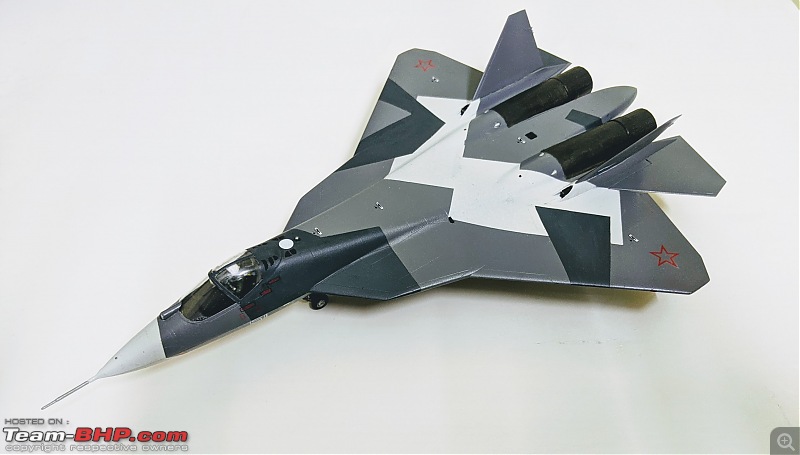 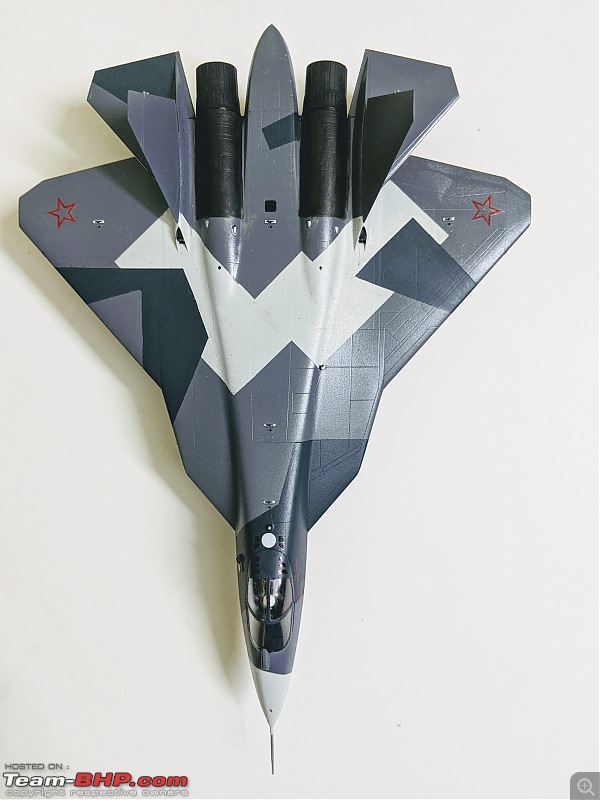 Interestingly the insides of the jet exhausts are white in colour. 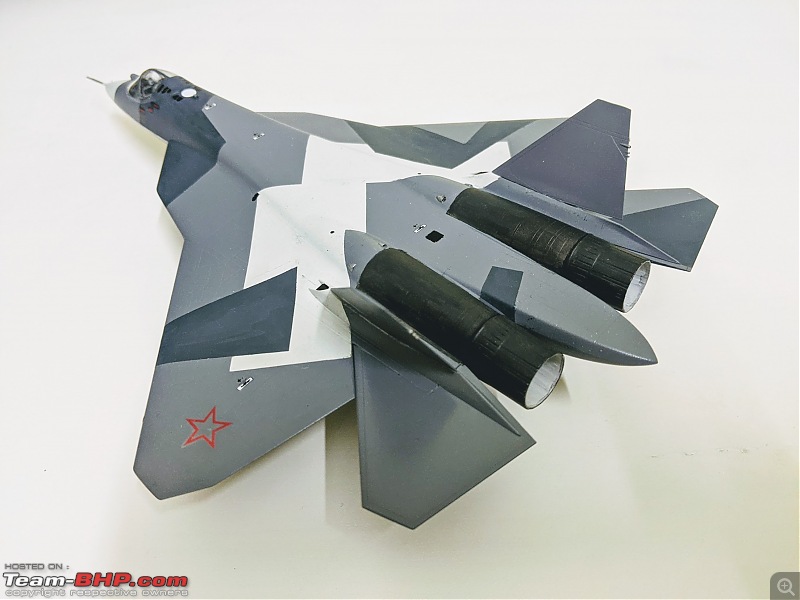 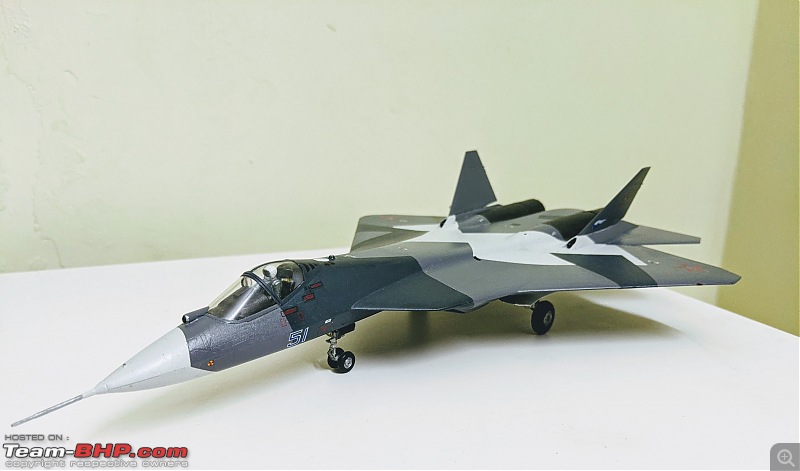 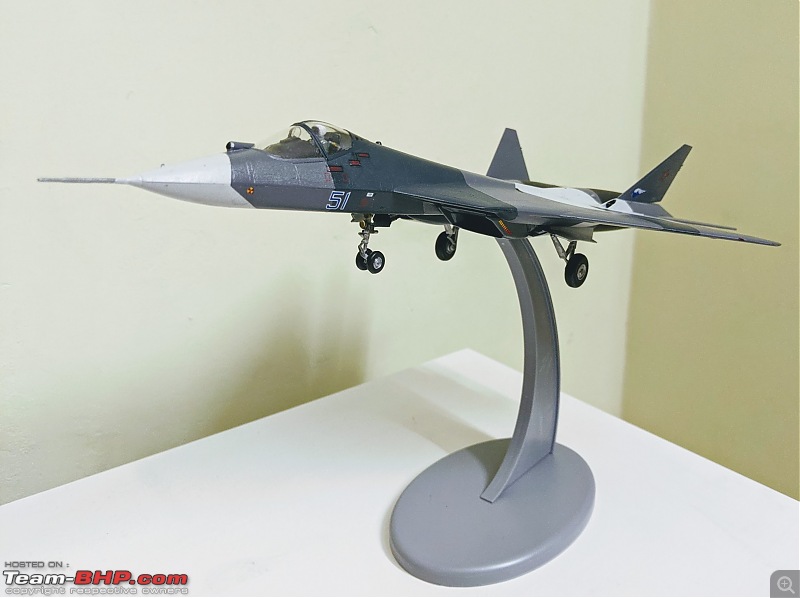 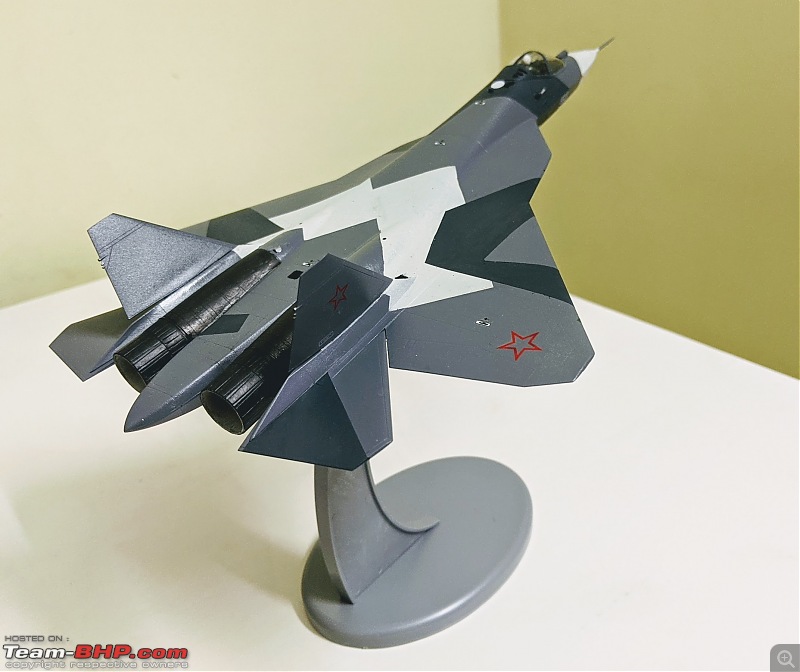 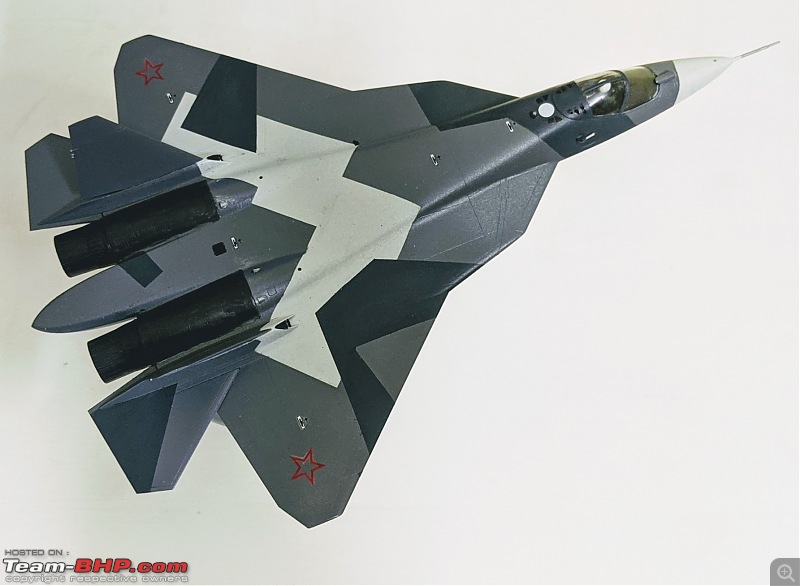 The Real T-50-1 Serial 51 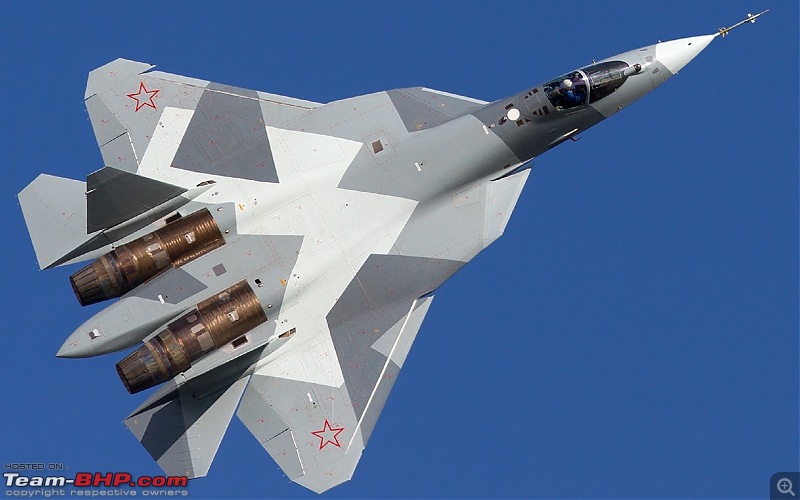 This is another great model from the Russian company Zvezda produced under license from Sukhoi. Construction was easy however painting the model took hours of hard work masking and unmasking different areas. A minimum of three coats of paint were applied. For the engines I must have applied 10-15 coats since "gunmetal" seems to have many shades  and I only realised I had the wrong shade when I examined the real photographs closely. and I only realised I had the wrong shade when I examined the real photographs closely.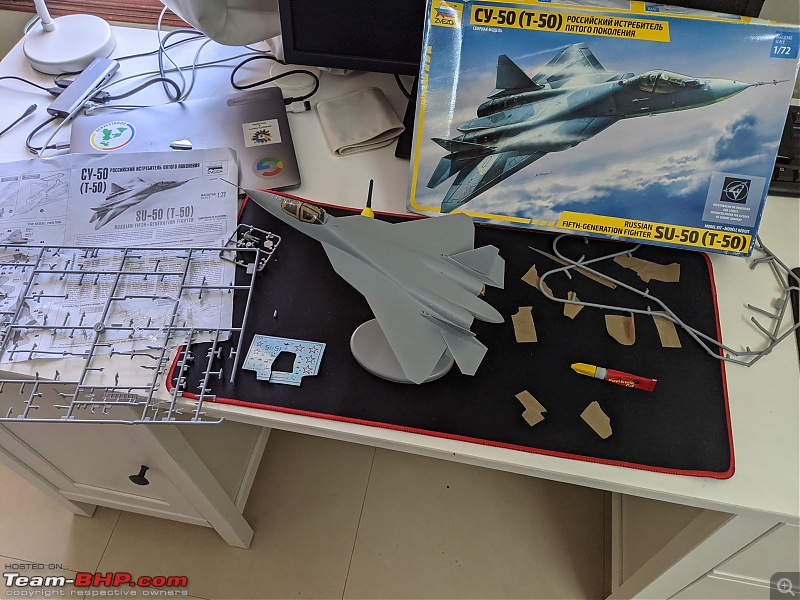 A great documentary by Russia Today on the development of the Su-57 The Sukhoi/HAL Fifth Generation Fighter Aircraft (FGFA) or Perspective Multi-role Fighter (PMF) was a fifth-generation fighter fighter concept, based on the Russian Sukhoi Su-57, that was developing by Sukhoi and HAL for the Indian Air Force. While the programme was earlier called FGFA, the combined project is now referred as Perspective Multi-Role Fighter (PMF).The completed FGFA was to include a total of 43 improvements over the Su-57, including advanced sensors, networking and combat avionics.The Indian version would be a two-seater with pilot and co-pilot or weapon systems operator (WSO). It was reported India withdrew from the FGFA programme in 2018, but also hinted that the project could be resumed at a later date, when the Su-57 is fully operational in the Russian Air Force first.However, General Director of United Aircraft Corporation Yuri Slyusar claimed that the FGFA program was not cancelled and India is still working with Russia regarding to the future aircraft.In October 2019, the Indian Air Force Chief of Air Staff RKS Bhadauria stated that the country will not be importing stealth fighters like the Su-57, and will instead focus on indigenous efforts such as the HAL AMCA. I heard the IAF was not happy with the stealth characteristics of the Su-57 but I am sure the radar cross section would have been less than the Rafale and at $40-50 million each would have been cheaper. Last edited by Foxbat : 29th December 2020 at 19:30. |
| |  (4)
Thanks (4)
Thanks
 |
| The following 4 BHPians Thank Foxbat for this useful post: | badboyscad, basuroy, skanchan95, V.Narayan |
| |
| | #1392 |
| Senior - BHPian | Re: Scale Models - Aircraft, Battle Tanks & Ships 1:72 Folland/HAL Gnat F.Mk.1 No.2 Squadron "Winged Arrows" Indian Air Force (Aviation72) The Indian Air Force's "Sabre Slayer" Gnat needs no introduction to any Indian aviation enthusiast. The Gnat earned the sobriquet of "Sabre Slayer" with the IAF as the Gnat's pilots shot down many of the mighty, Korean War fame North American Aviation F-86F Sabre(and later Canadair Sabre Mk.6) of the Pakistan Air Force in the 1965 & 1971 Indo-Pak wars. As Air Chief Marshal P.C. Lal wrote about the the Gnat in his book “My Years with the IAF” - “In the wars of 1965 & 1971, it was a little David slaying Goliaths like the Sabres” General characteristics Crew: 1 Length: 28 ft 8 in (8.74 m) Wingspan: 22 ft 1 in (6.73 m) Height: 8 ft 1 in (2.46 m) Wing area: 136.6 ft² (12.69 m²) Empty weight: 4,800 lb (2,175 kg) Max takeoff weight: 9,040 lb (4,100 kg) Powerplant: 1× Bristol-Siddeley Orpheus 701-01 turbojet, 4,705 lbf (20.9 kN) Fuel: - Internal tanks – 795.5 Litres - External tanks – 2 X 300 Litres Maximum speed: 695 mph at 20,000 ft (1,120 km/h at 6,100 m) Range: 500 mi (805 km) Service ceiling: 48,000 ft (14,630 m) Rate of climb: 20,000 ft/min (101.6 m/s) Armament 2x 30mm ADEN cannons 2x 500 lb (227 kg) bombs or 18x 3 in (76 mm) rockets The Gnat was the creation of William Edward Willoughby "Teddy" Petter, a British aircraft designer who had gained wide recognition for his design of the English Electric Canberra bomber and other aircraft. Petter had grown suspicious of the trend towards bigger and more expensive combat aircraft, and he felt that a small, simple fighter would offer the advantages of low purchase and operational costs. The Gnat was armed with two 30 millimeter Aden revolver-type cannon, firing from the outer edge of the air intakes. While this arrangement might have suggested that the Gnat would be prone to engine flameouts from muzzle gas ingestion, that did not prove to be the case, suggesting that the muzzle system had been carefully designed to deflect the gases out to the sides. The Gnat also had two stores pylons for drop tanks, 225 kilogram (500 pound) bombs, or unguided rocket pods. The evaluation Gnats were powered by the production-spec Bristol Orpheus 701 turbojet with 20.1 kN (2,042 kgp / 4,502 lbf) thrust. Most of the test flights were conducted in the UK, though ground-attack trials were performed in Aden (now Yemen). The report from the RAF evaluation generally praised the Gnat's performance, but there were criticisms of its flight-control systems, and there was no consensus that the Gnat was what the RAF needed. Midge had a number of advanced features, such as hydraulically powered "flaperons", main gear that could be used as airbrakes, and a one-piece canopy that hinged over an inner armored windscreen. Despite the underpowered engine, the little jet could break Mach 1 in a dive and was very agile. The good press given the Gnat opened the way for export sales. Gnat F.Mk.1s were sold to India, Finland and Yugoslavia. India was also interested in a naval version of the Gnat but in an ironic turn of events it was found that the aircraft was too light - the catapult gear on the INS Vikrant, the Indian Navy's aircraft carrier, needed a 10,000lb weight minimum! Gnat F.Mk.1 Users Yugoslavia 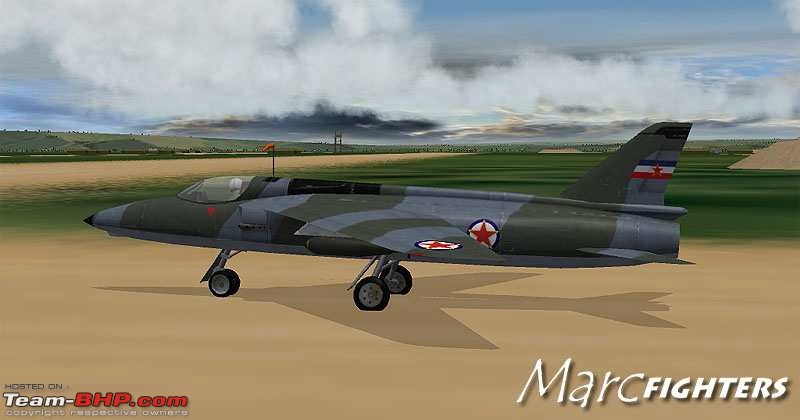 Two Gnat F.1s, serial numbers 11601 & 11602, were sold to Yugoslavia for evaluation and possible license production in Yugoslavia. The two examples were delivered in June and July of 1958. Yugoslav pilots were impressed with the Gnat’s maneuverability and handling but its short range and inability to carry substantial armament made the Yugoslavs to opt for the Sabre instead. One Gnat was written off in a belly landing after hydraulic failure and Yugoslavia went on to buy second-hand F-86 Sabres instead of proceeding with more Gnats. Yugoslavia also bought F-86D-45s Sabre Dogs. The Sabres remained in service till in Air to Air role until Mig-21Fs arrived in Yugoslavia. Finland 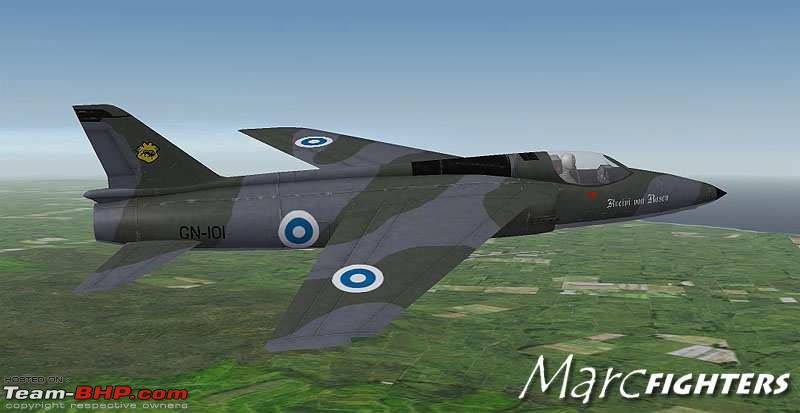 The Finnish Air Force acquired 13 Folland Gnat F.1 aircraft in 1958-1960.They were coded GN-101 to GN-113. Two of the aircraft, GN-112 and GN-113, were photographic versions ('FR.1') equipped for reconnaissance. The Gnats of the Finnish Air force were used from 1958 to 1974. The first two aircraft arrived on 30th July 1958 for the Fighter Squadron 21 (HävLv 21). The next day Major Lauri Pekuri exceeded the speed of sound as the first Finn in the Finnish airspace. One of the Gnats (GN-102) was destroyed due to a technical fault on 26th August 1958. The Gnats were grounded, and only in January 1959 did they fly again, after thorough investigations and rectifications. A public debate that had begun in the press even before the aircraft's arrival was fuelled by the accident and contributed to the fact that no more Gnats were purchased and license production that had first been planned was not started in Finland. Finnish pilots liked the Gnat but the longitudinal instabilities did give rise to some concern and it had to be carefully handled. Many snags and deficiencies emerged in Gnats in the early stages of their service, and continuous modification work was necessary to ensure flying safety. In 1961 HävLv 21 that flew the Gnats was renamed HävLv 11 (Fighter Squadron 11). In 1967 the Gnats were replaced by MiG-21F aircraft. The Gnats were used as trainers but they were still fully operational and armed. They were finally retired in 1974. India 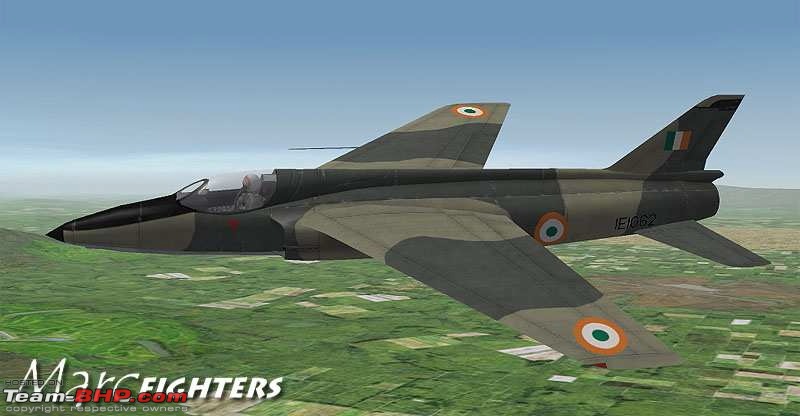 Indian interest in the Gnat was accidental. In October 1954, Indian test pilots Air Commodore P.C.Lal (Later Air Chief 1971 war), Group Captain H. Moolgavkar and Wing Commander Roshan Suri were sent to Europe to evaluate various European fighters on offer. These were Dassault Mystere IVA, Supermarine Swift and Saab Lansen. The Swift was, on paper, considered best suited for IAF requirements. P.C. Lal test flew the Swift at Chilbolten, had an engine flameout and after great difficulty landed safely. The test flight was disappointing. However, while flying the Swift, he noticed a tiny aircraft doing maneuvers near Chilbolten. On landing, Lal enquired about the aircraft and was told that it was the Folland Midge, a prototype of the Gnat but on a slightly smaller scale, designed by Teddy Petter. Lal was impressed and wanted to meet Mr. Petter and see if the aircraft was for sale to India. Lal met Petter and was told that the aircraft was not for sale to India. Later during a meeting between the directors of the aircraft company and the Indian test pilots, there was a conversation between the directors and Air Commodore Lal. Mr. Petter over heard a conversation and later called Lal to enquire whether he would like to test fly the Gnat. The Indian test pilots test flew the Gnat and were impressed with its handling characteristics, the Indian team recommended to the Government of India that the aircraft be considered for the air defense component of the IAF. A contract was signed in 1956 and an agreement to manufacture the aircraft in India, the start of a long affair between the IAF and the tiny Gnat. The initial order was for 40 Gnats - 25 to be built at Hamble and 15 to be delivered as kits for assembly by HAL. HAL would also license produce the Gnat from scratch. Squadron Leader Suranjan Das, arguably India’s foremost test pilot of the time, was sent to Folland to assist in developing the Gnat. He was an exceptional pilot and he and Sqdn Ldr E A Tennant (Folland test pilot) put on the Gnat air displays at Farnborough, Legend has it that Tennant once remarked that he had learnt a quite a few things about display flying the Gnat from Suranjan Das. In late 1957 the first Gnat (IE-1059) was airlifted to India in the cargo bay of an IAF C-119G Packet (the Gnat's small size meaning that only the wings had to be removed for this flight). Later when Petter visited HAL to see the indigenous Production of Gnat at HAL, he confessed to P C Lal that he was under the impression that India was a communist country and did not want to sell his aircraft to Communists. But later when he heard that cricket was being played in India and that India was a democracy, he agreed to sell the aircraft to India. No. 23 Sqdn “Panthers” became the first squadron to equip with the Gnat. HAL started delivering Gnats built from indigenous raw materials from 1962 onwards. By 1965, three Squadrons - No. 23 “Panthers”, No. 2 “Winged Arrows” and No. 9 “Wolfpack”, were operational with the Gnat, while the fourth sqdn, No. 18 “Flying Bullets” was undergoing conversion to Gnat when the 1965 war broke out. The Gnats performed well in the 1965 war. Its exploits in the 1965 war earned it the nickname "Sabre Slayer" as it downed eight PAF F-86s during the 1965 war. Squadron Leader Trevor Keelor of No. 23 "Panthers" Squadron opened IAF's account in the 1965 war when he shot down a PAF F-86 on 3rd September 1965 over Chamb. Trevor Keelor's brother, Sqdn Ldr Denzil Keelor too was flying Gnats with No. 9 "Wolfpack" Sqdn. He too shot down a PAF F-86 on 19th September. Thereby making it a unique achievement of brothers flying the same type of aircraft, albeit with different squadrons, shooting down the same type of enemy aircraft. In the 1965 war, Eight F- 86s were shot down by IAF Gnats earning it the nickname "Sabre Slayer". In return two Gnats were downed by PAF fighters. During the initial days of the 1965 War an IAF Gnat, piloted by Squadron Leader Brij Pal Singh Sikand, landed at an abandoned Pakistani airstrip at Pasrur and was captured by the PAF. Pakistan initially claimed that the Gnat surrendered to two Pakistani F-104 Starfighters after straying from its main formation, while India claimed that the pilot lost his way, was low on fuel and landed by mistake. Later, a retired PAF historian, Air Commodore Kaiser Tufail, mentioned that the Gnat actually landed before the F-104 arrived on the scene, giving credibility to the Indian version. This particular captured Gnat (IE-1083) is displayed as a war trophy in the Pakistan Air Force Museum, Karachi. Sadly one of Gnat’s teething problems, Gun Stoppage, occurred many times in combat against F-86s, denying many Gnat pilots kills. Had the problem not occurred, IAF Gnats would certainly have notched up few more kills. In the 1971 war, Gnats were operational with Eight IAF Sqdns (Nos. 2 “Winged Arrows”, 9 “Wolfpack”, 15 “Flying Lances”, 18 “Flying Bullets”, 21 “Ankush”, 22 “Swifts”, 23 “Panthers” & 24 “Hawks”). Gnats drew first blood when Gnats of No.22 "Swifts” Sqdn engaged PAF Canadair Sabre Mk.6s after they violated and strafed Indian positions near Boyra in the eastern theater of operations. Two Sabres were shot down and its pilots captured, while the third escaped back to East Pakistan(now Bangladesh) and crashed - its pilot ejected ( The victorious Indian pilots were Flt Lt M A Ganapathy, Flt Lt Roy Andrew Massey and Fg Off Don Lazarus). The most memorable of engagements by Gnats in the west, was that by Flying Officer Nirmaljit Singh Sekhon of No.18 "Flying Bullets" Squadron. Flying from Srinagar on December 14th, Sekhon took off while still the runway was being bombed and he single handedly took on six PAF F-86 Sabres. Although eventually overwhelmed and killed, he managed to take score hits on two of them. Eventhough he was advised to get out of the combat area, his heroic efforts, above and beyond the call of duty, saved Srinagar airfield from destruction. The Param Vir Chakra (India’s highest gallantry award equivalent to the US Medal of Honor) was posthumously awarded to Fg. Off. N.J.S. Sekhon. Apart from air defence operations, Gnats performed multiple roles in the Bangladesh Liberation War being utilized in Anti-Shipping Operations, Ground attack, Bomber/Transport escort and Close Air Support with "devastating effects" on the Pakistani Forces. 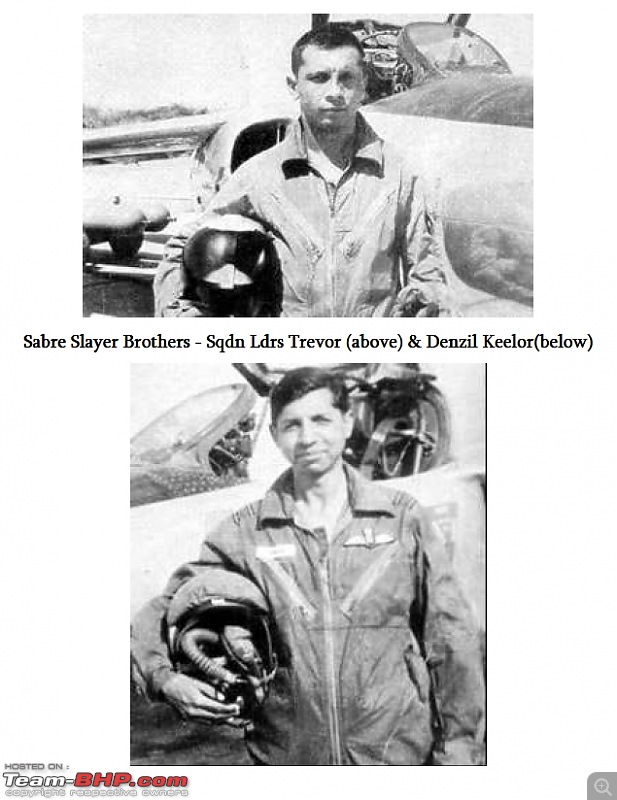 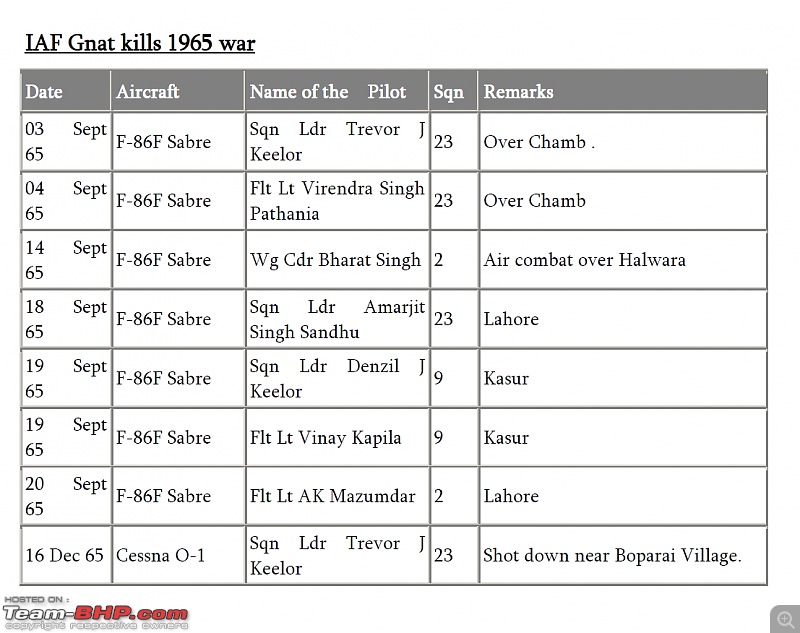  The Gnats served with frontline squadrons till 1974 till they were replaced either by HAL Gnat Mk.II “Ajeet” (No.2,9,18,22) or HAL Type 75 MiG-21bis Fishbeds (No.15,21,23,24). HAL Gnat Mk.II (Ajeet) Year deployed: 1976 Crew: 1 Length: 28 ft 8 in (8.74 m) Wingspan: 22 ft 1 in (6.73 m) Height: 8 ft 1 in (2.46 m) Wing area: 136.6 ft² (12.69 m²) Empty weight: 2307Kg Max takeoff weight: 4171 Kg Powerplant: 1TJE HAL (Rolls-Royce/Bristol Siddeley) Orpheus Bor.2 Mk.701-01 Maximum speed: 695 mph at 20,000 ft (1,120 km/h at 6,100 m) Fuel: - Internal tanks - 1350 Litres - External tanks – 2 X 300 Litres Service ceiling: 48,000 ft (14,630 m) Rate of climb: 20,000 ft/min (101.6 m/s) Armament 2 X 30 mm cannons Aden Mk 4 with 90 rounds Warload - up to 1000 kg in 4 hard points 250 or 227 kg free fall, cluster bombs, ML 55 or 68 mm UR The IAF were impressed by Gnat's performance in the two wars, but the plane had problems like hydraulics, gun stoppages and some of its control systems were unreliable. To address these issues, the IAF issued a requirement for an improved "Gnat II" in 1972, at first specifying that the new version was to be optimized as an interceptor, but then expanding the specification to include the ground-attack role. The HAL-built licensed version was called the "Ajeet"(Sanskrit for "Invincible /Unconquered / Unbeatable").The two initial prototype Ajeets (E-1083 & E-1084) were modified from the last production Gnats built by HAL. The first production Ajeet flew on 30 September 1976, with deliveries to the IAF beginning in 1977. A total of 79 Ajeets were built by the time manufacture ended in 1982, and ten Gnats were upgraded to Ajeet standards. The Ajeet was difficult to tell apart from a Gnat at a casual glance, but it incorporated many changes and improvements. The most visible change was that the Ajeet had four stores pylons, with a total carriage capacity of 900 kilograms (one ton), instead of the Gnat's two pylons. Other significant changes included: · Improved hydraulics and controls. · Fit of the Martin-Baker Mark GF4 ejection seat instead of the Folland designed Type 2G seat. · New avionics, including a modern Ferranti gunsight. · A slab tailplane. · Improved landing gear with an antiskid braking system. · Fuel tanks built into the wings, with each integral wing tank storing 250 liters (66 US gallons) of fuel. The integral wing tanks meant that all four stores pylons could be used for weapons. The small size of the Gnat had meant limited range without drop tanks, and with the Gnat's two stores pylons, drop tanks meant no weapons other than cannon. The Ajeet was much better suited to the ground attack role than the Gnat. Four former Gnat Squadrons (No.2,9,18,22) converted to Ajeet. No.2 Sqdn was the last IAF squadron to operate the Ajeet. They retired their Ajeets in 1991 and converted to HAL MiG-27MLs. Incidentally, all Ajeet squadrons converted to MiG-27s. The legacy of a “light fighter” continues to this day in India with the development of the HAL-ADA Light Combat Aircraft (LCA) “Tejas” Strengths & Weaknesses of the Gnat The Gnat, a British all metal swept wing interceptor, the first prototype of which flew in 1955, was a compromise arrived at by the aircraft's designers to achieve the smallest possible size and high performance at low price. Its specifications were impressive: close to supersonic speeds, a rate of climb of 10,000 ft per minute, a high roll rate, a favourable thrust weight ratio and service ceiling of 48,000 ft. A Rolls Royce Bristol Orpheus 101 non-afterburning turbo-jet engine, giving it a phenomenal rate of climb and acceleration, powered it. Its pilots could go to 45,000 ft from "brakes off" in less than 4 minutes. The Gnat's size, 10 ft in height, 37 ft in length, with a wing-span of 24 ft was its main asset. Difficult to spot visually- as more than one pilot remarked after air combat exercises against Gnats – 'you can only fight what you see' – and weighing half as much as its contemporaries, its agility and rate of tightness of turn were unmatchable. Its Bristol Orpheus engine gave it a speed 50 miles greater then that of the F-86 Sabre at high altitude, this advantage was negated at lower altitudes, where most of the dogfights of the 1965 war took place. To keep the weight down The Gnat dispensed with the airbrake, using instead the main gear and nose wheel bay covers to act as airbrakes in flight, in a semi-retracted position. Its light weight gave it an phenomenal thrust to weight ratio. Its controls were extremely sensitive. requiring its pilots to be always alert for any nasty surprises thrown at them. The aircraft would twitch with even slight pressure on the controls. Some problems were encountered with the airbrake/Landing gear bay covers extending during normal flight, gun stoppages during combat while others had engine flame out problems. There were some pilot fatalities at both RAF facility at Chilbolten and at IAF's AATU at Kanpur. Both HAL and IAF evolved methods to overcome and rectify these deficiencies. Performance against other fighters In a clean configuration with 30 mm ammunition, it weighed 6500 lbs. With an engine thrust of 5,000 lbs, its power to weight ratio was unmatched amongst its contemporary fighters, like the Hunter, Sabre and MiG-17…. The Gnat could outclass the Hunter at all altitudes and MiG-21 below 10,000 feet. Without afterburner, However, the MiG-21 was no match for the Gnat. Moreover, the Gnat could also out climb the MiG-21 (using afterburner) upto 10,000 feet. The Hunter, with its maneuvering flaps, could not out-turn the Gnat at low level. However, when it used the flaps, the Hunters bled its speed to 300 knots, while the Gnat could still maintain more then 400 knots at 5 g. The Gnats could always get behind the Hunter by superior maneuvering in the vertical plane. IAF Gnat (and Hunter) pilots who were shot down in combat by PAF F-86s made the mistake of engaging the F-86s in the horizontal plane. The Gnat’s power to weight ratio was such that the pilots were told to get the F-86s in a vertical fight instead of a circular fight, where the F-86 had the advantage. Because of the Gnat’s higher thrust to weight ratio, it could easily out climb and out-maneuver the F-86 in the vertical plane. The F-86 could not match the Gnat’s climb performance and had to drop down to prevent itself from stalling, the Gnat could then reverse and go after the F-86. No.2 Squadron Indian Air Force "Winged Arrows" No.2 Squadron IAF was the second IAF unit to convert to the Gnat (the first being No.23 Sqdn "Panthers"). No.2 Sqdn flew Dassault Ouragans before converting to the Gnat in 1962. No.2 Squadron's Gnat shot down two PAF F-86s in the 1965 war. The squadron converted to the Ajeet in 1983. They became MiG-27M squadron in 1991 which they flew till 2003 before being numberplated. The squadron was re-raised in 2009 on the Su-30MKI. The Model First the bad- Technically it is an Ajeet, as the serial number E1976 was that of an Ajeet. Secondly, the drop tanks are wrong and these type of drop tanks were only seen on Finnish Gnats. 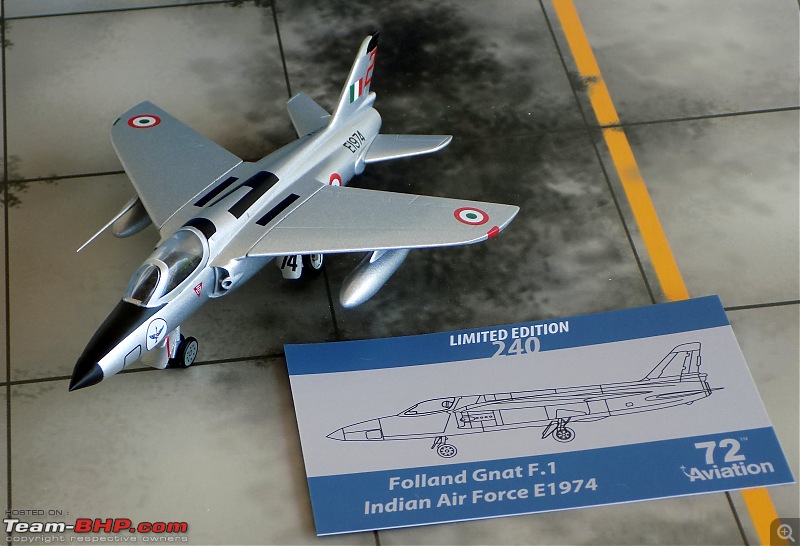 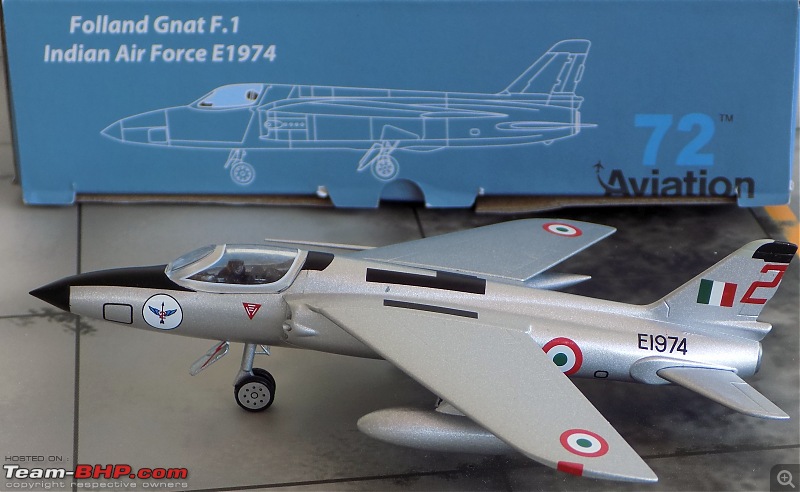  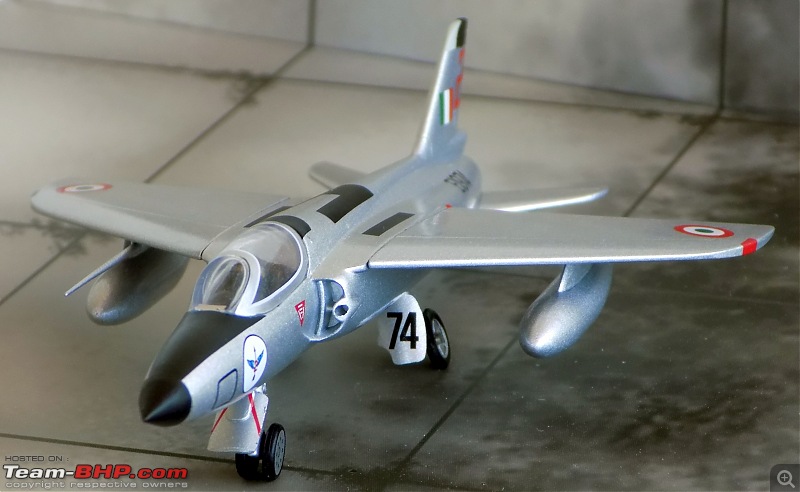  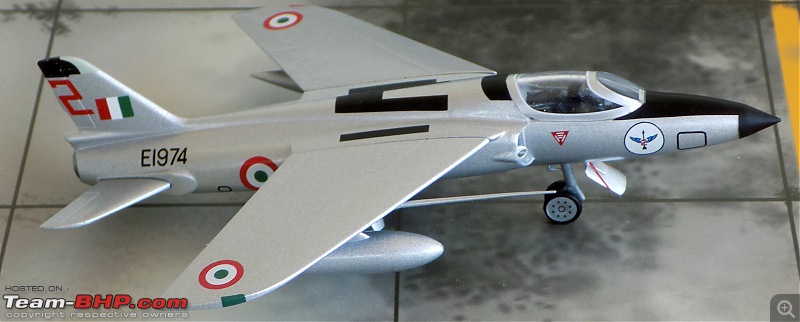 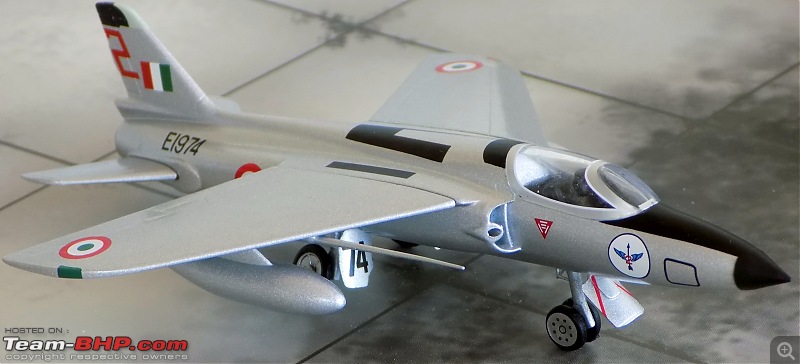 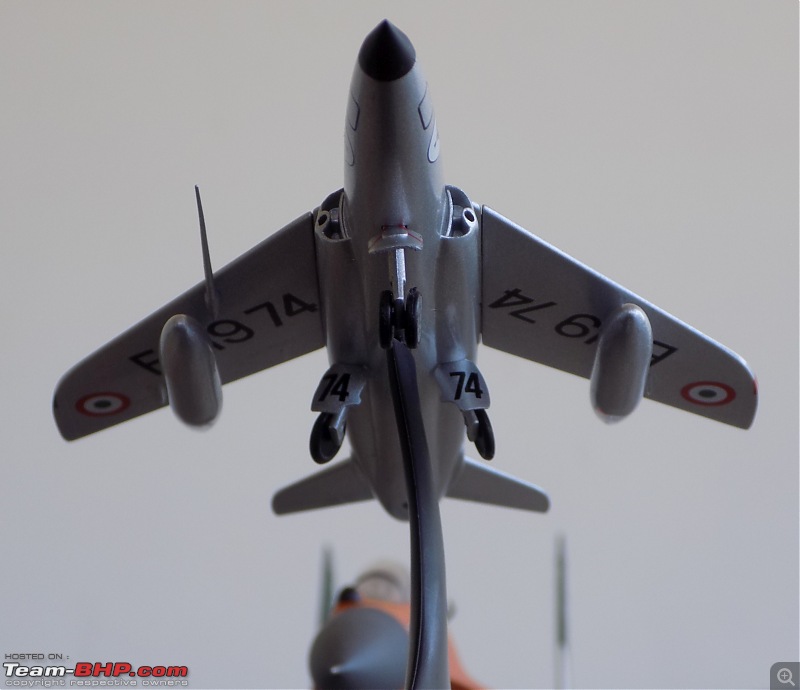 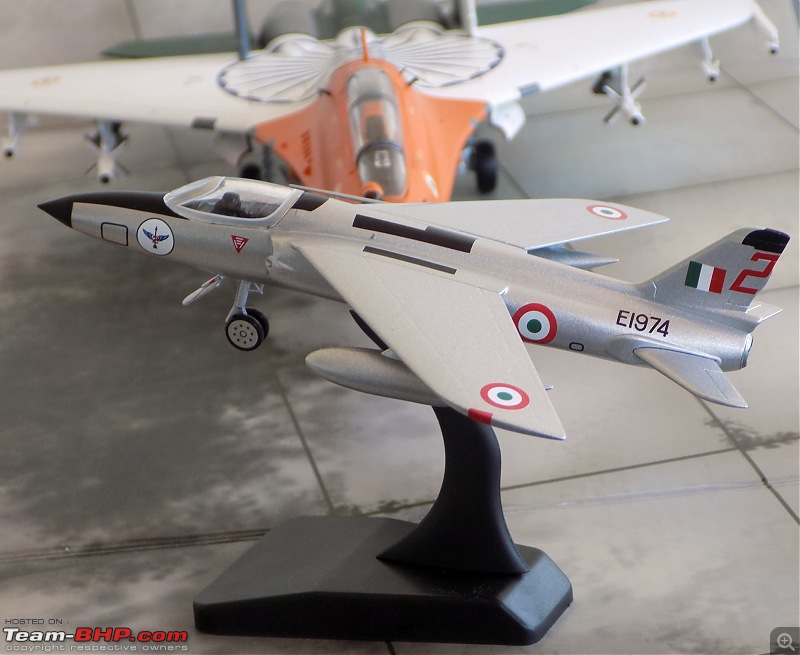 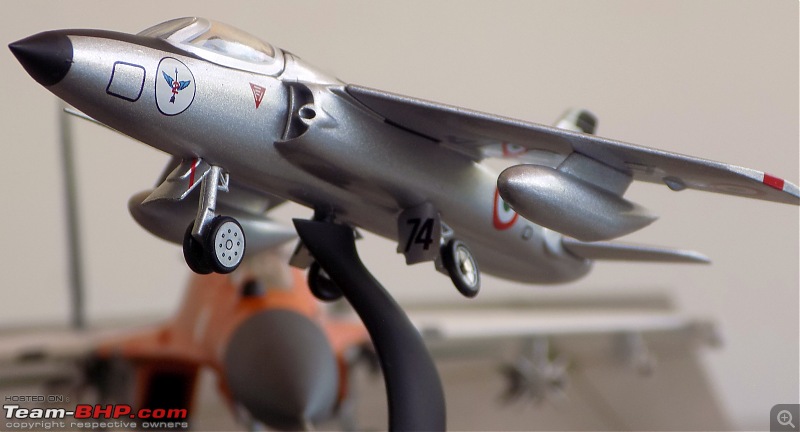 The Gnat's gear doors which worked as airbrakes. Note the drop tanks. These were the ones seen on IAF Gnats.  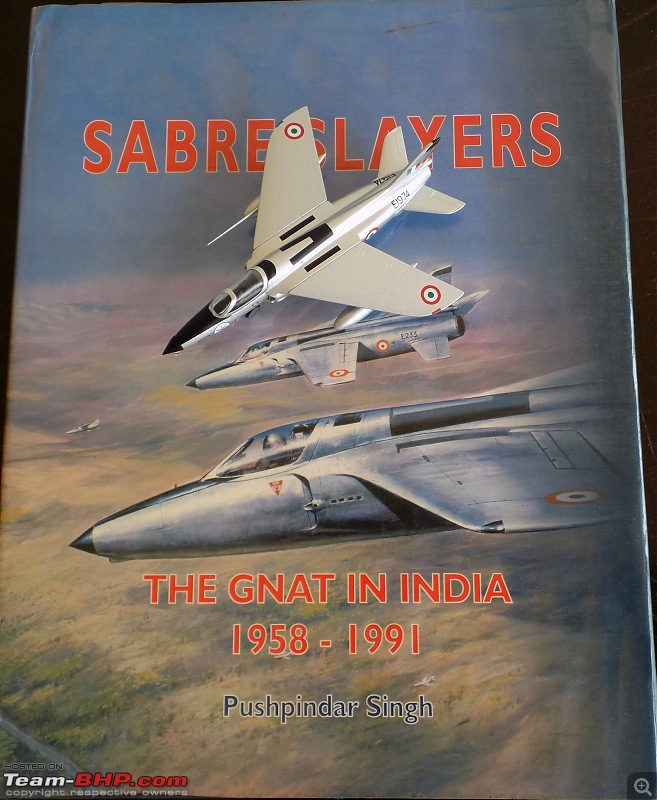 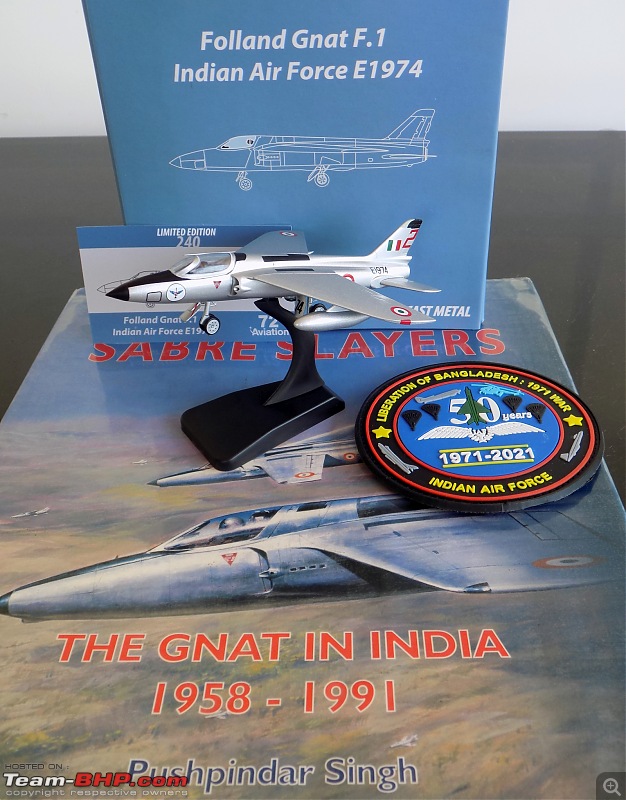 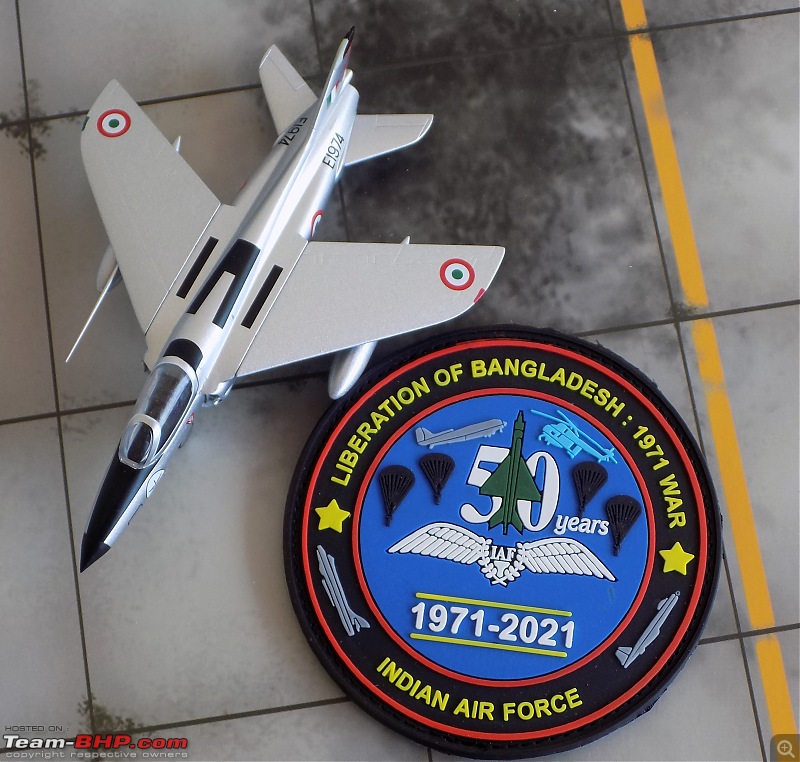 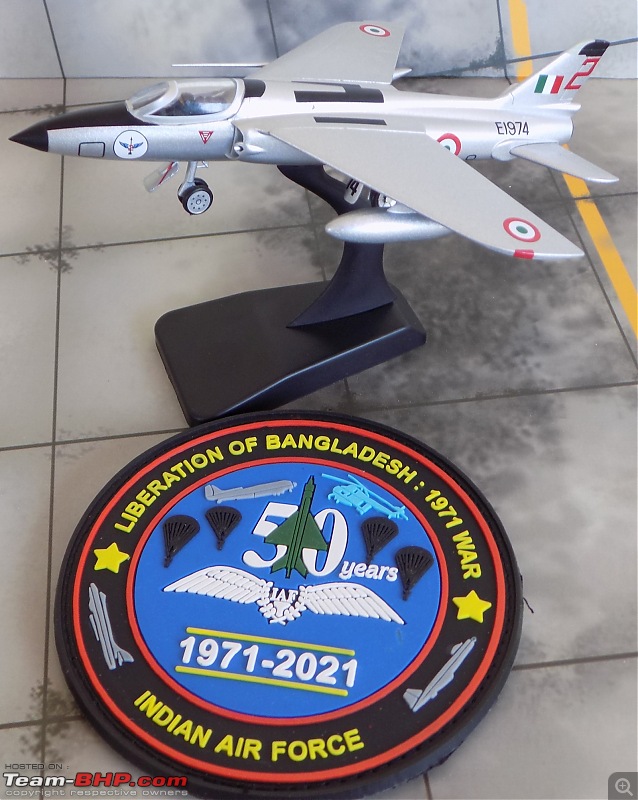 What the Gnat would have looked like in combat against the F-86 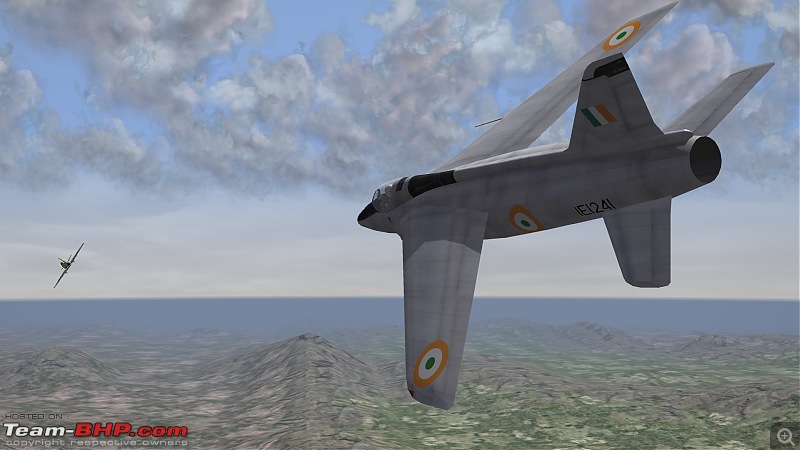 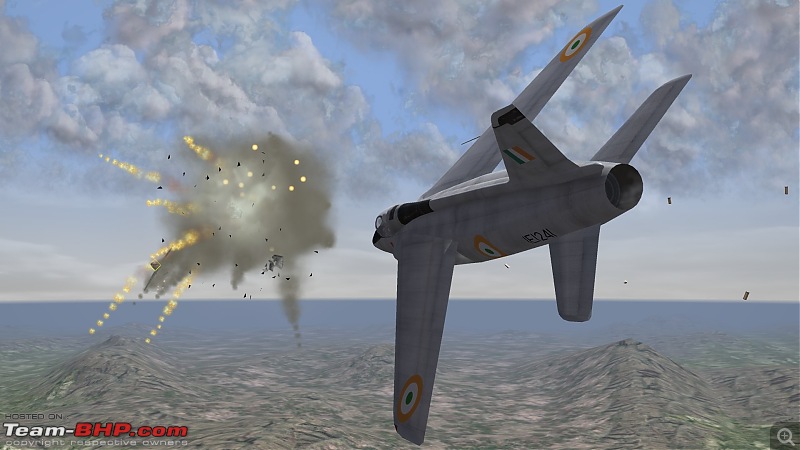 From the cockpit.... 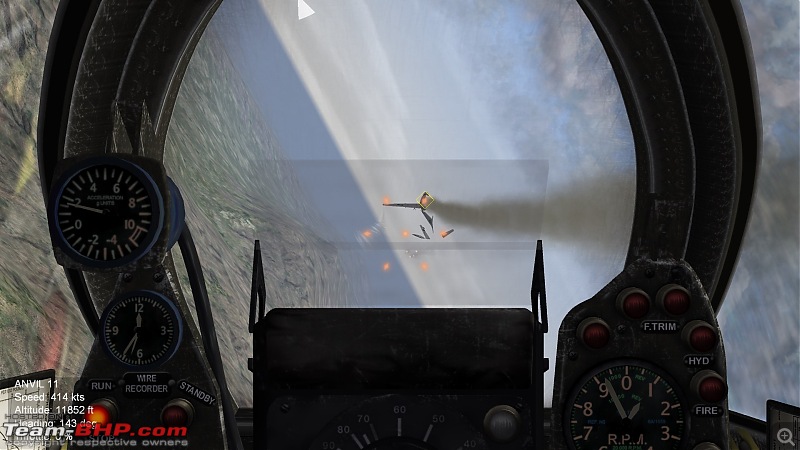 Last edited by skanchan95 : 30th December 2020 at 13:08. |
| |  (4)
Thanks (4)
Thanks
 |
| The following 4 BHPians Thank skanchan95 for this useful post: | basuroy, Foxbat, FrozeninTime, V.Narayan |
| | #1393 |
| Senior - BHPian | Re: Scale Models - Aircraft, Battle Tanks & Ships The heaviest & lightest jet fighters ever operated by the IAF - the Flanker & the Gnat Look how low the Gnat's stance was. It was probably was one of the few jets in the world that one could walk over and look down into the cockpit. It must have felt like a being in a lawn chair with a jet engine strapped on your backside!!! 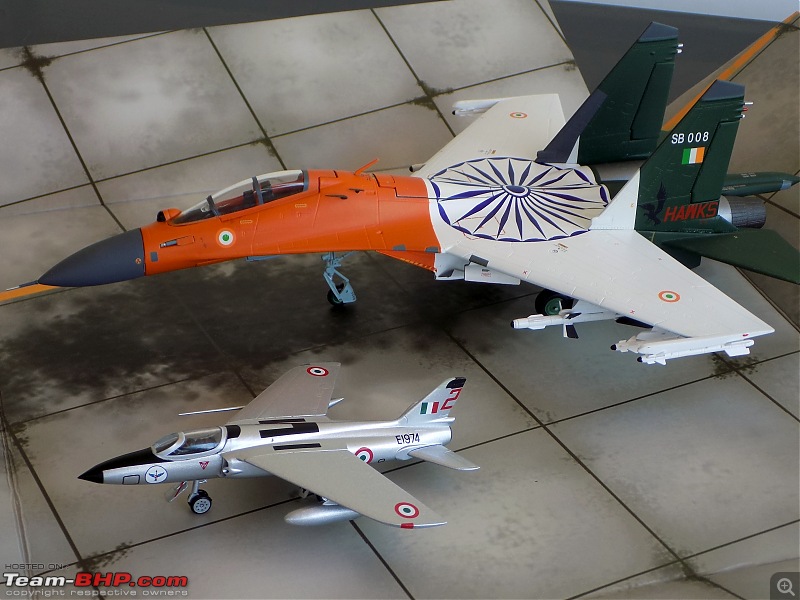 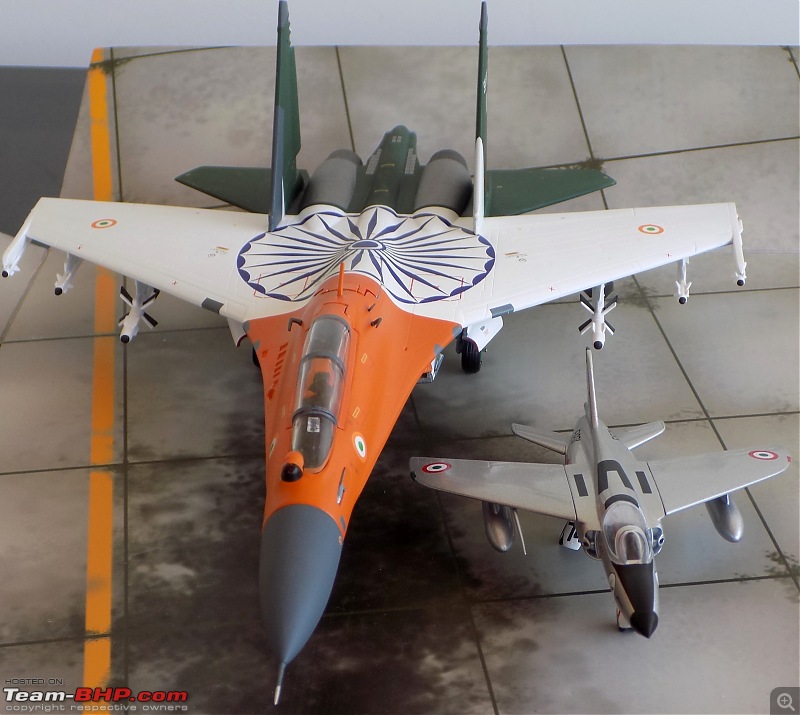 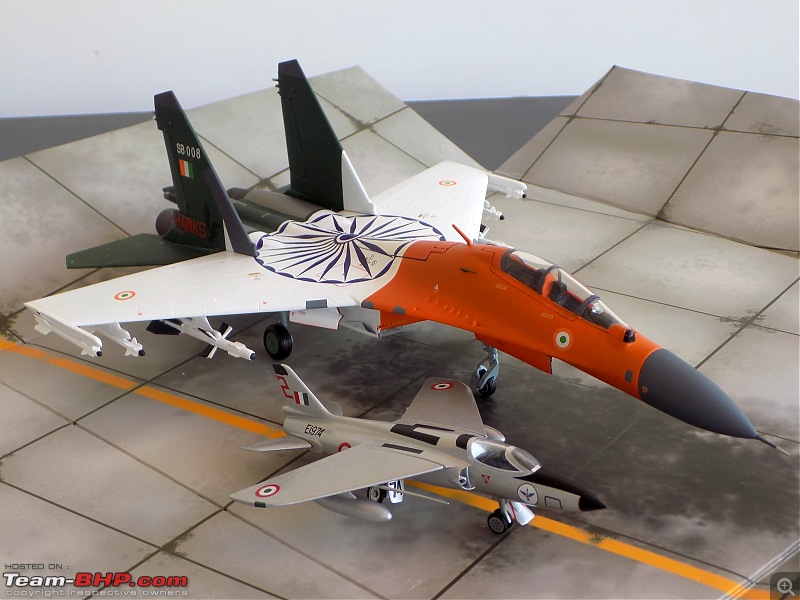 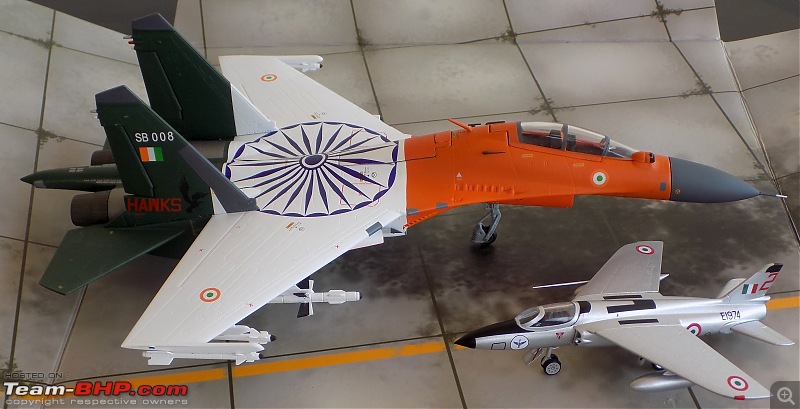 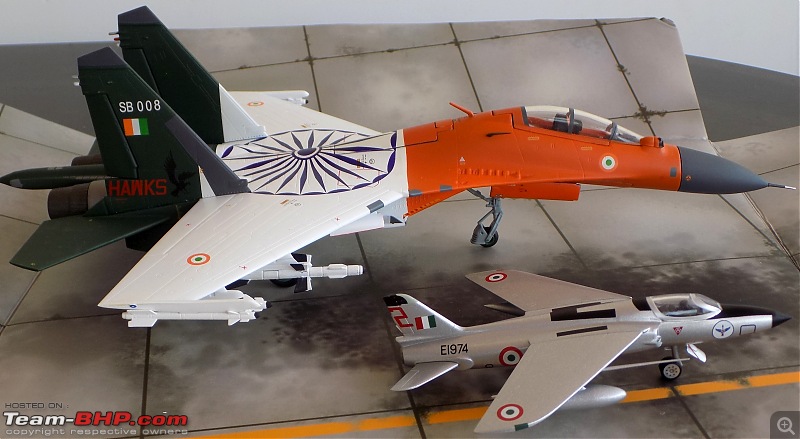 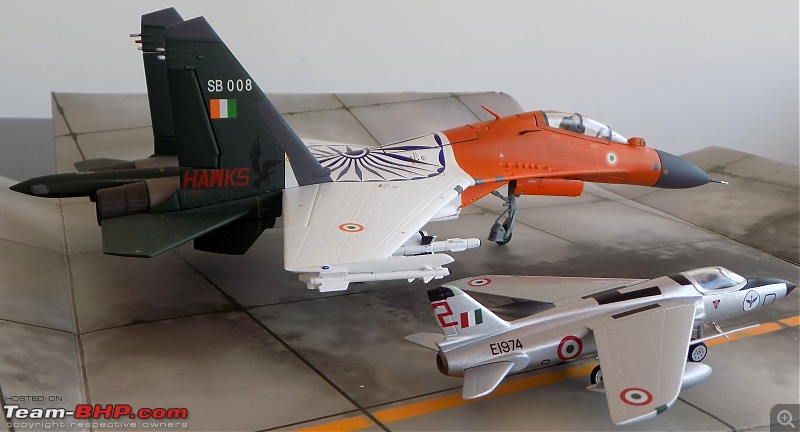 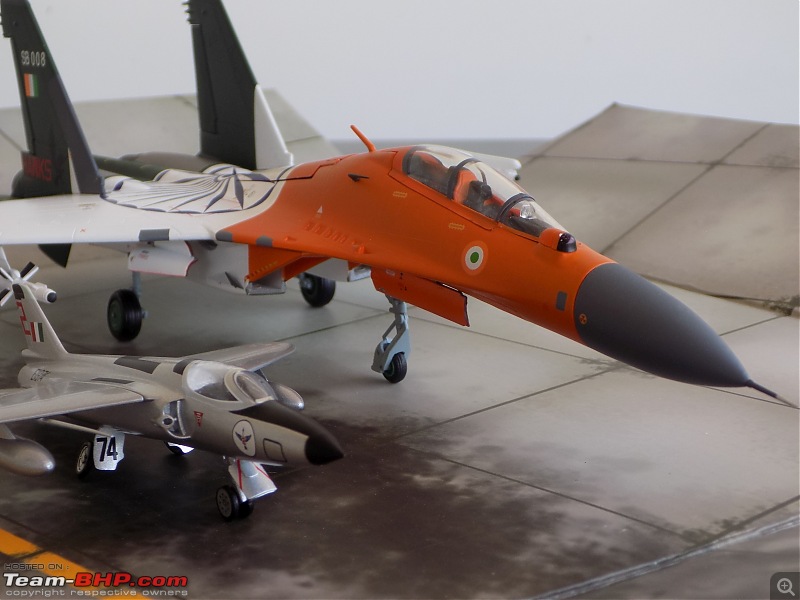 Squadron No. 2 "Winged Arrows" & 24 "Hawks" - Both Su-30MKI squadrons currently 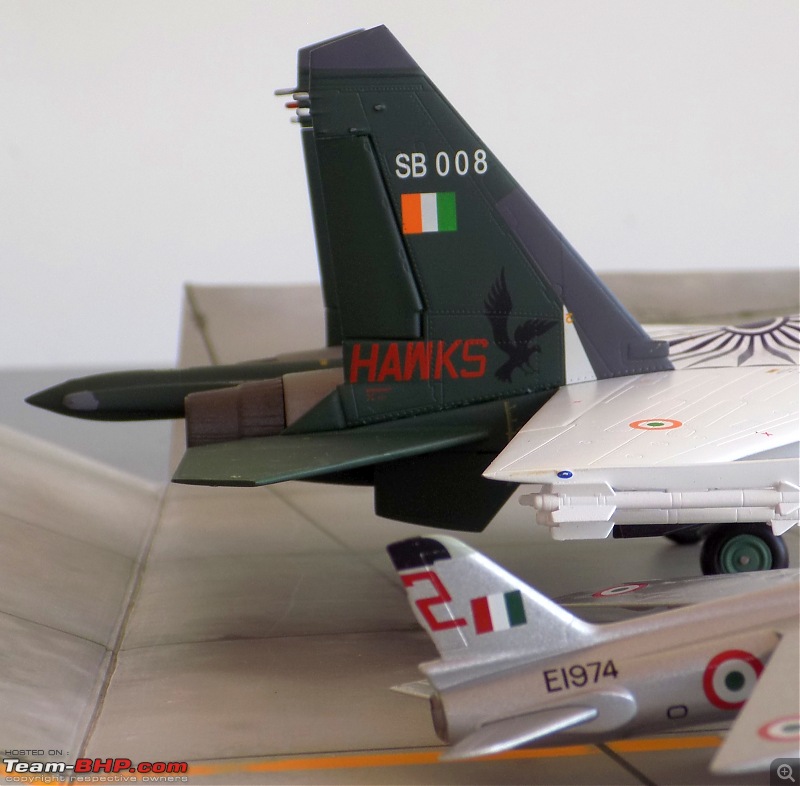 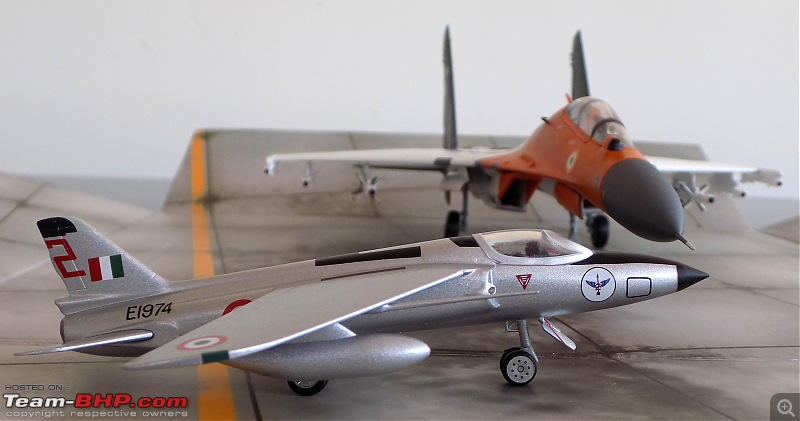 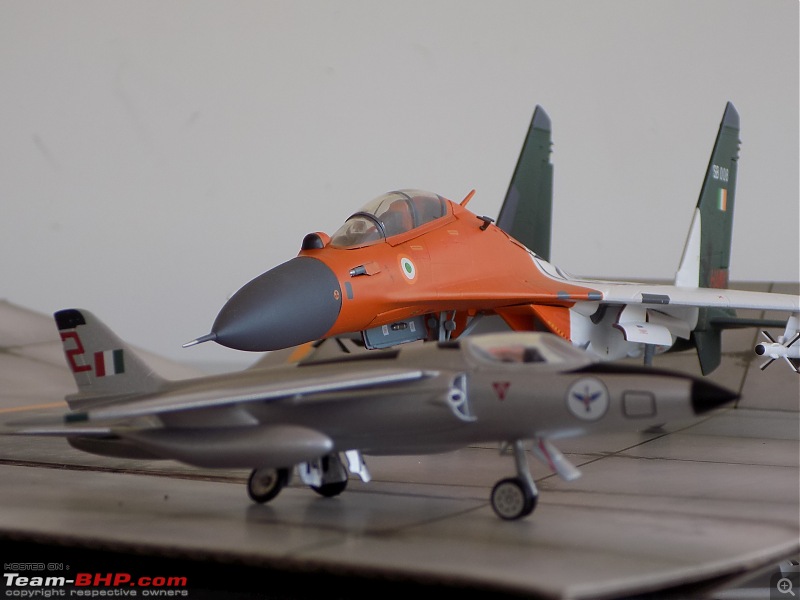 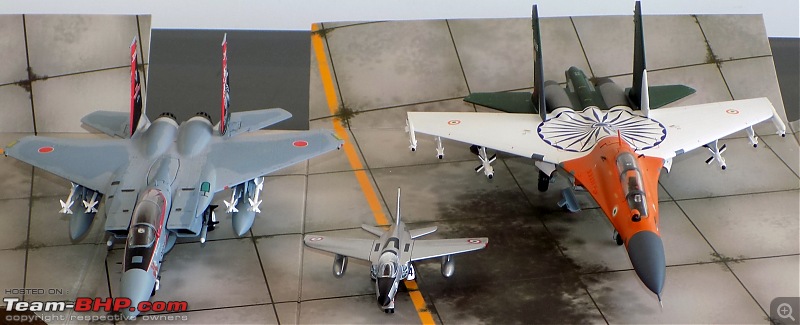 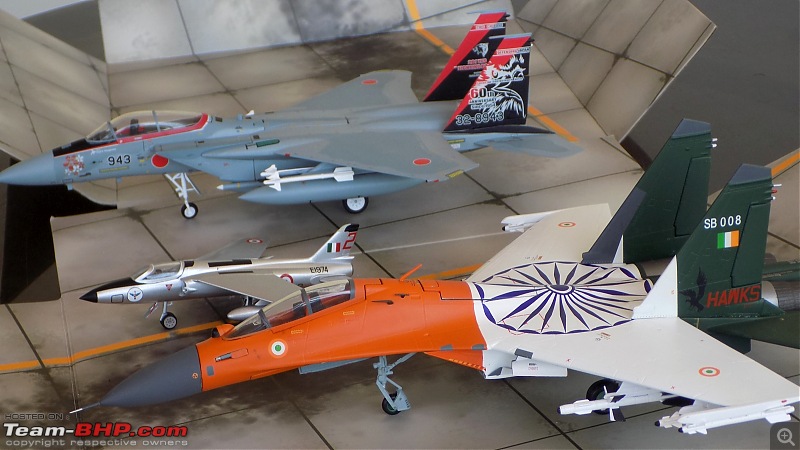 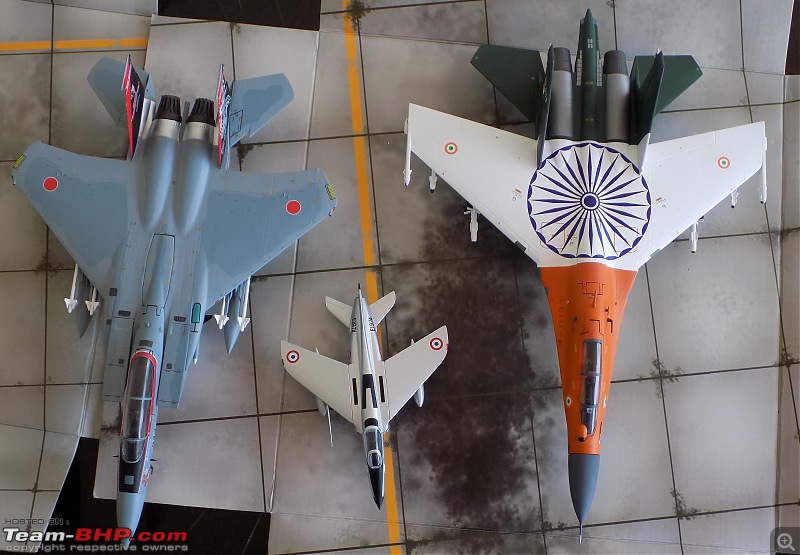 Last edited by skanchan95 : 30th December 2020 at 16:11. |
| |  (5)
Thanks (5)
Thanks
 |
| The following 5 BHPians Thank skanchan95 for this useful post: | badboyscad, basuroy, Foxbat, shancz, V.Narayan |
| | #1394 | |||
| Distinguished - BHPian  Join Date: Aug 2014 Location: Delhi-NCR
Posts: 4,071
Thanked: 64,335 Times
| Re: Scale Models - Aircraft, Battle Tanks & Ships Quote:
Quote:
 For Indian school boys of my generation the Gnat evokes the same awe inspiring tone as Spitfire must have for British boys of my father's generation. I still remember with alacrity the Boyra incident and the buzz around the cantonement of how the Gnats had shot down Sabres. War was in the air. Blackout rehearsals had been done all over the country and without TV and internet news only travelled in whispers by phone and All India Radio news. In the ever chatting rounds amongst us boys by the next day 3 Sabres down had become 12 and the Gnats had, with our fertile imaginations, been equipped with AAMs and rearward firing cannons and God alone knows what not. In 1966 Denzil Keelor was my next door neighbour. He was God for me and he was wonderful with kids. For Indian school boys of my generation the Gnat evokes the same awe inspiring tone as Spitfire must have for British boys of my father's generation. I still remember with alacrity the Boyra incident and the buzz around the cantonement of how the Gnats had shot down Sabres. War was in the air. Blackout rehearsals had been done all over the country and without TV and internet news only travelled in whispers by phone and All India Radio news. In the ever chatting rounds amongst us boys by the next day 3 Sabres down had become 12 and the Gnats had, with our fertile imaginations, been equipped with AAMs and rearward firing cannons and God alone knows what not. In 1966 Denzil Keelor was my next door neighbour. He was God for me and he was wonderful with kids.I wonder what a Gnat powered by the Rolls Royce Adour (20% more power and 15% more endurance) and armed with Magic Matra IR AAMs would have been like. Quote:
 | |||
| |  (2)
Thanks (2)
Thanks
 |
| The following 2 BHPians Thank V.Narayan for this useful post: | Foxbat, skanchan95 |
| | #1395 | |
| Senior - BHPian | Re: Scale Models - Aircraft, Battle Tanks & Ships Quote:
 . . | |
| |  (1)
Thanks (1)
Thanks
 |
| The following BHPian Thanks skanchan95 for this useful post: | V.Narayan |
 |



 F-15 model) - The canopy looks more like that of twin seat F-15B/D eagle than a Single seat F-15A/C/J. While I knew about it, the livery was just too good to let go.
F-15 model) - The canopy looks more like that of twin seat F-15B/D eagle than a Single seat F-15A/C/J. While I knew about it, the livery was just too good to let go.